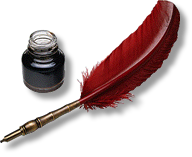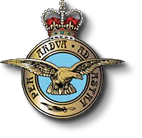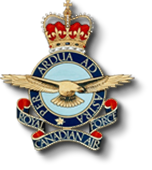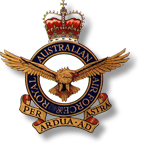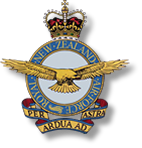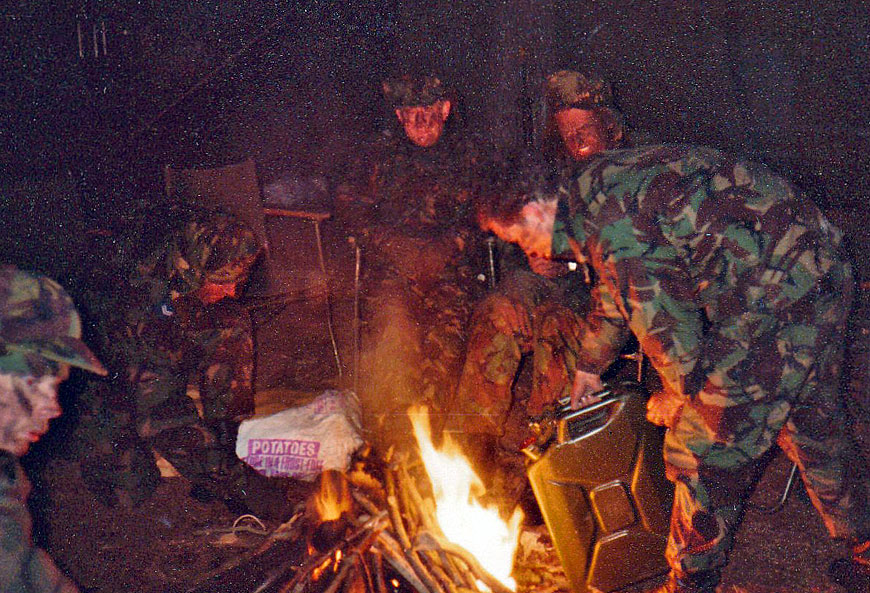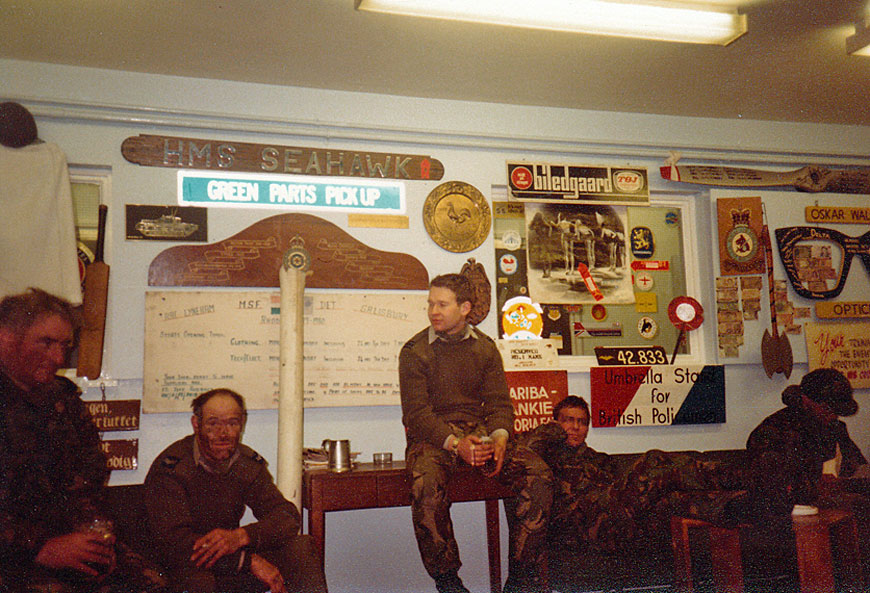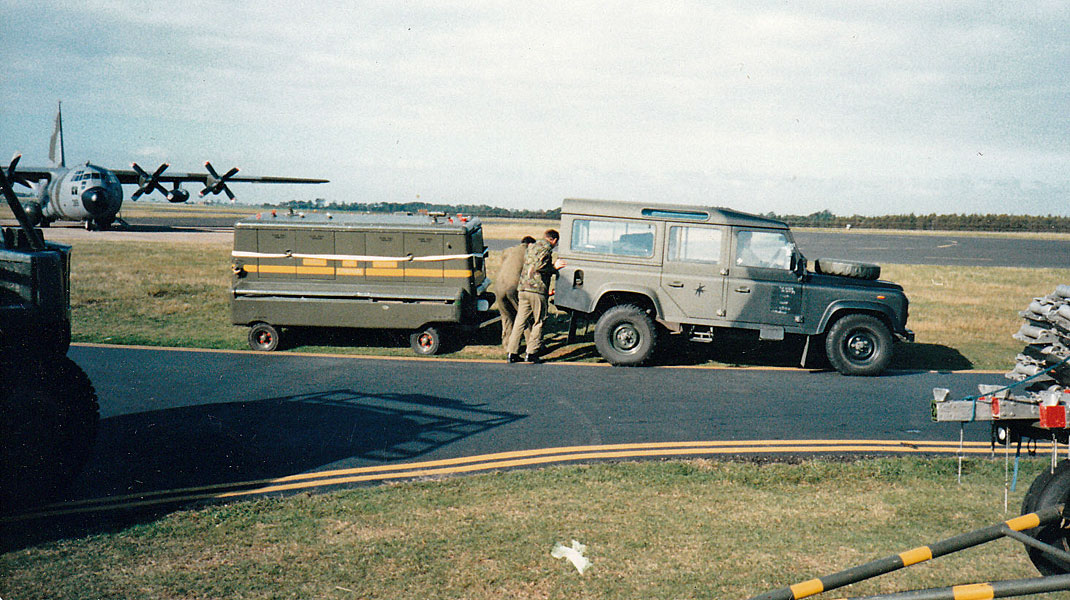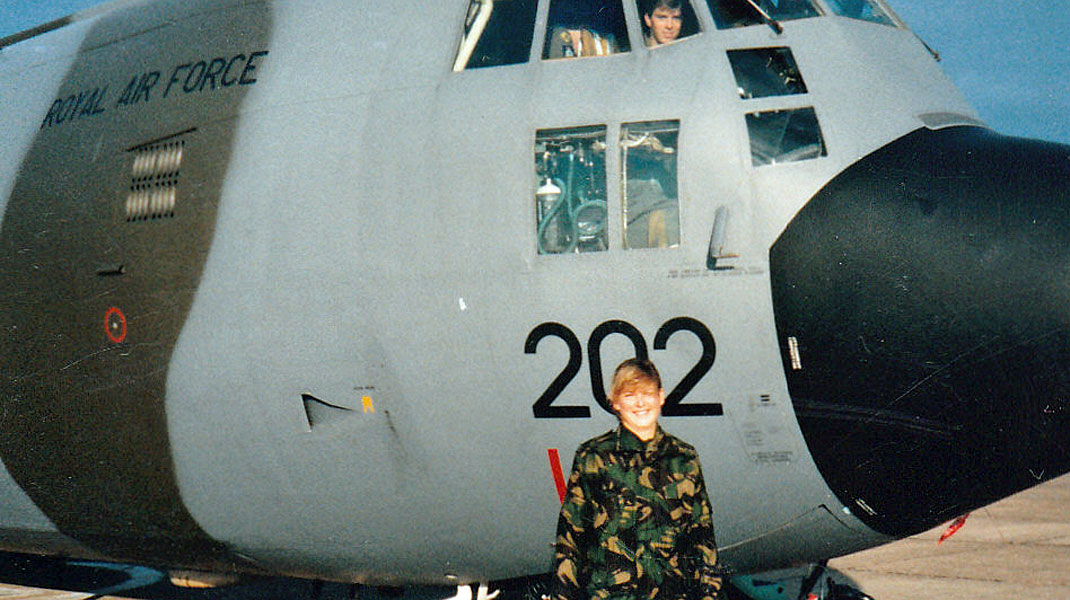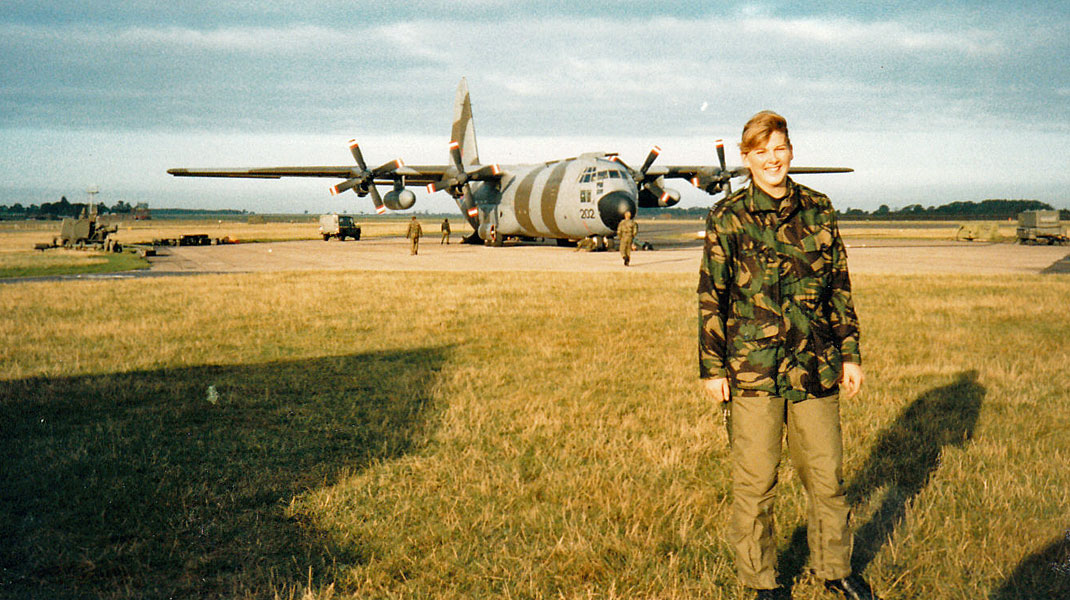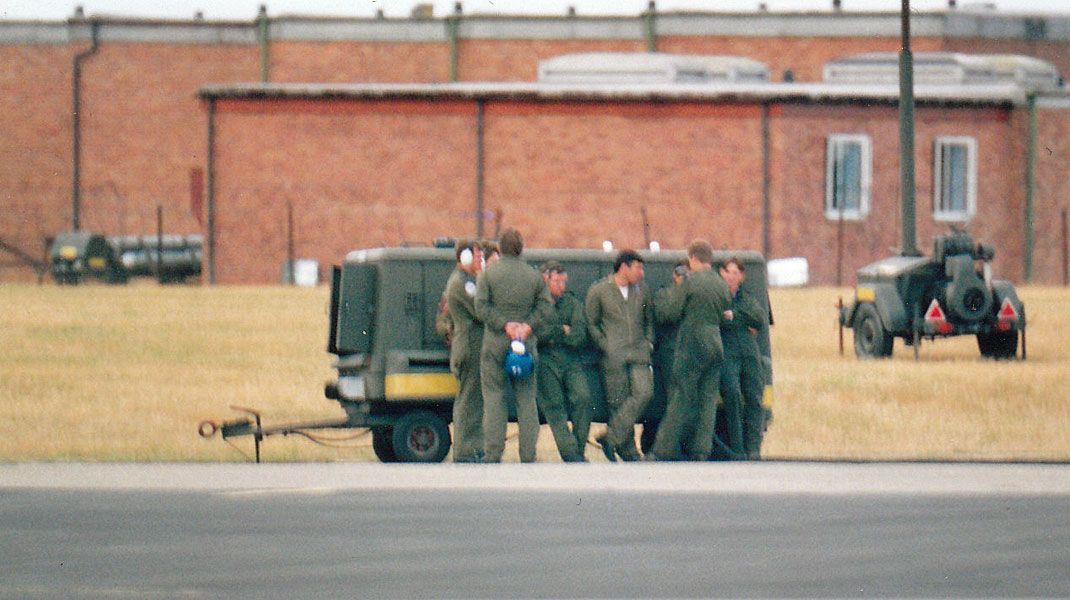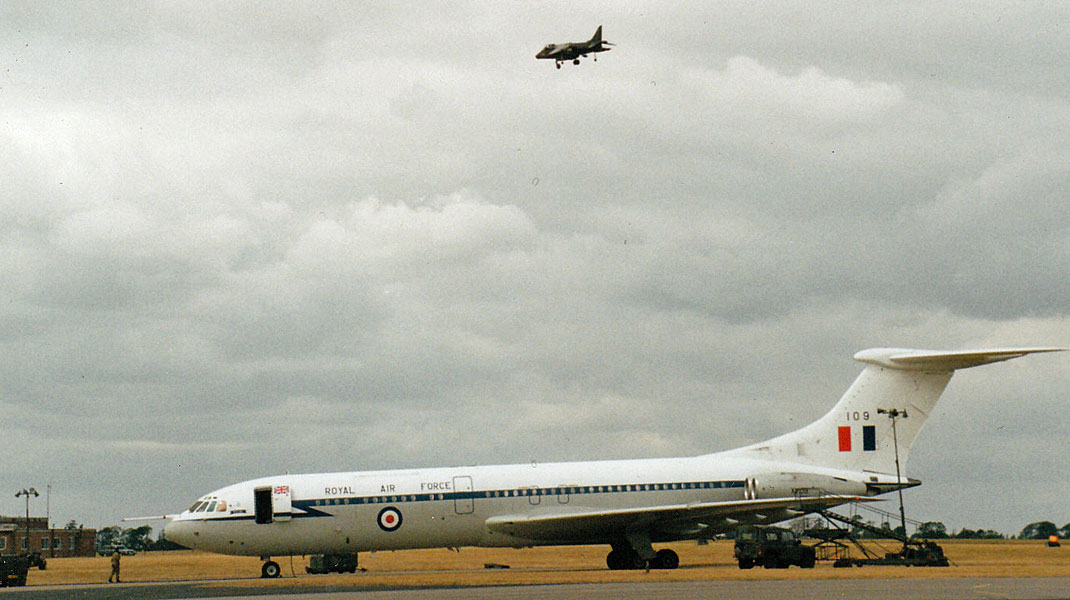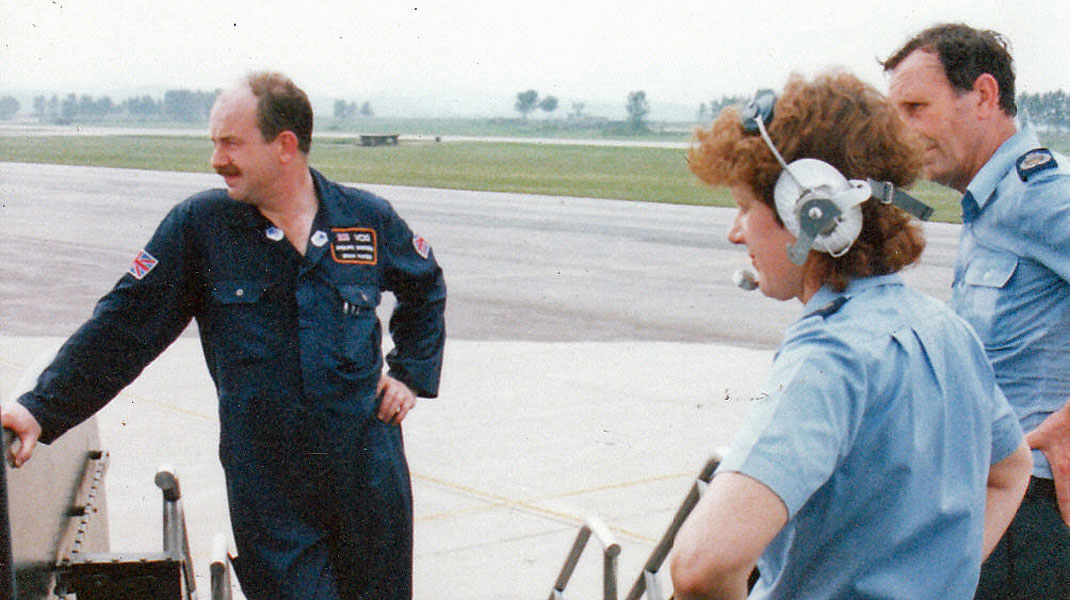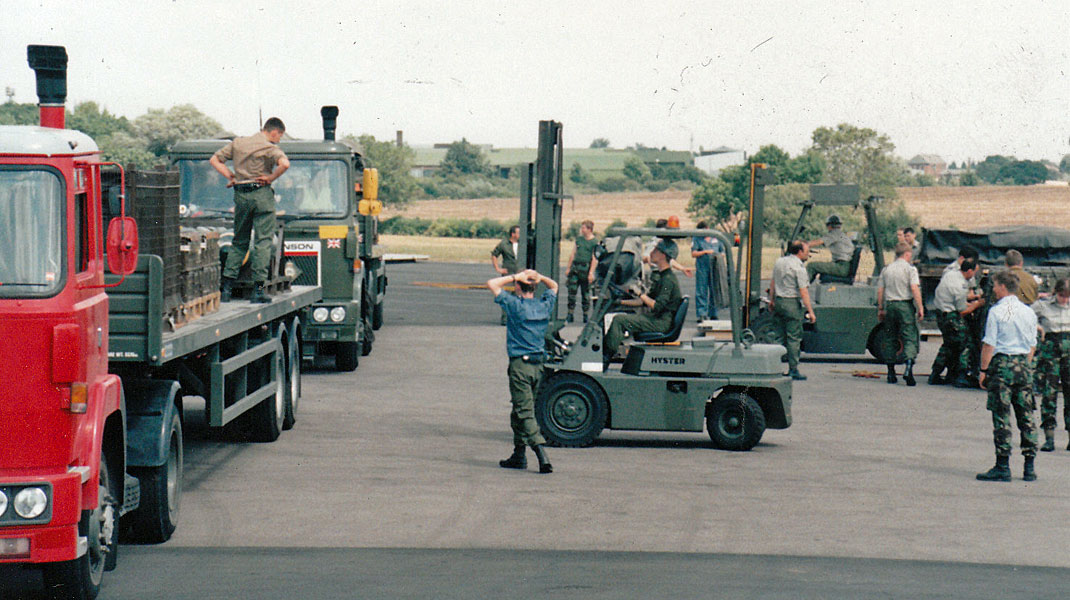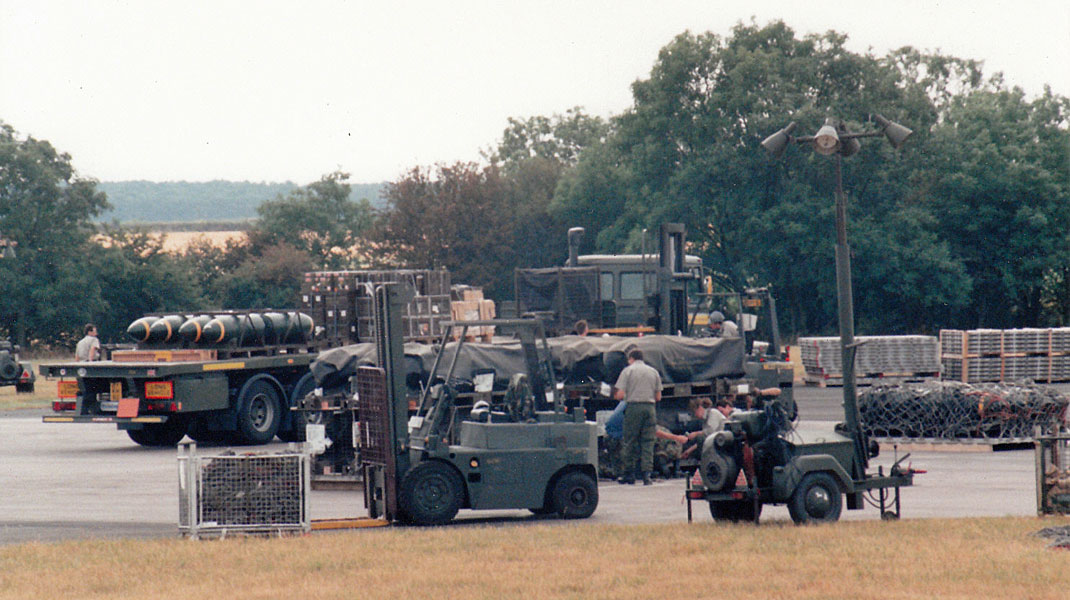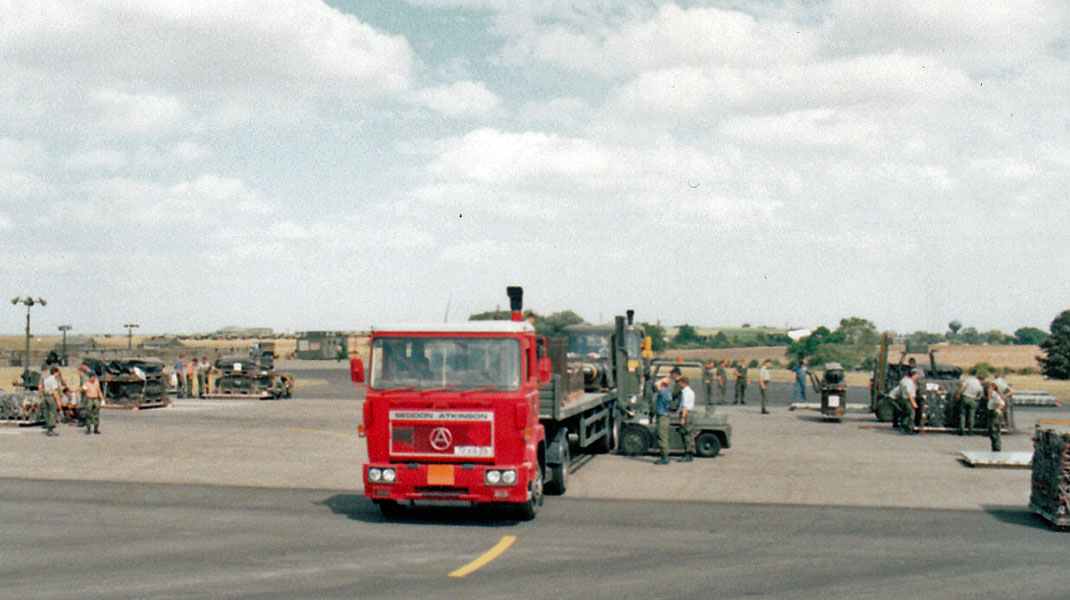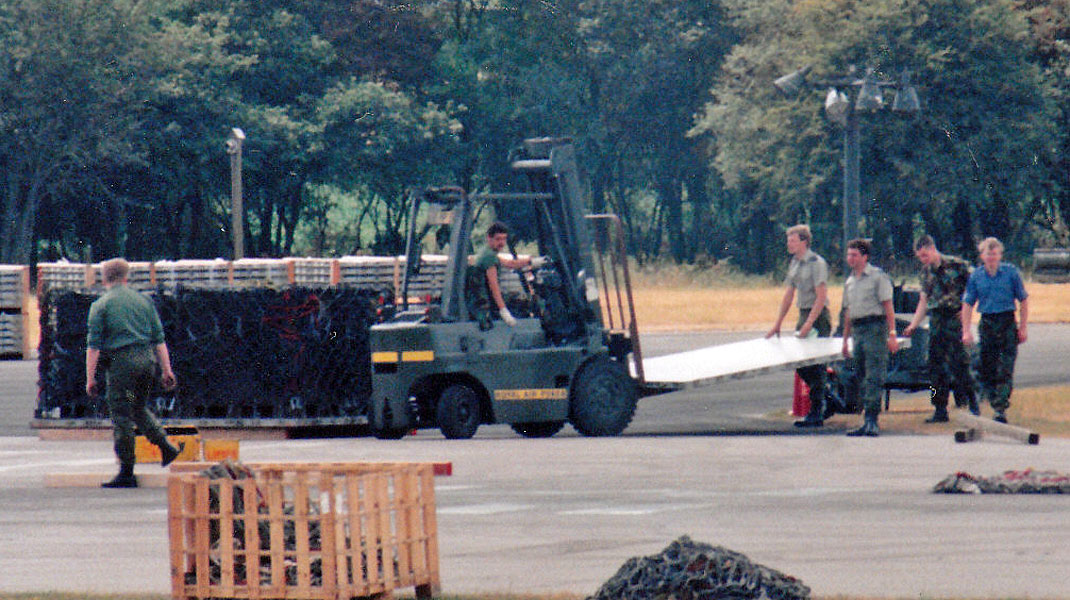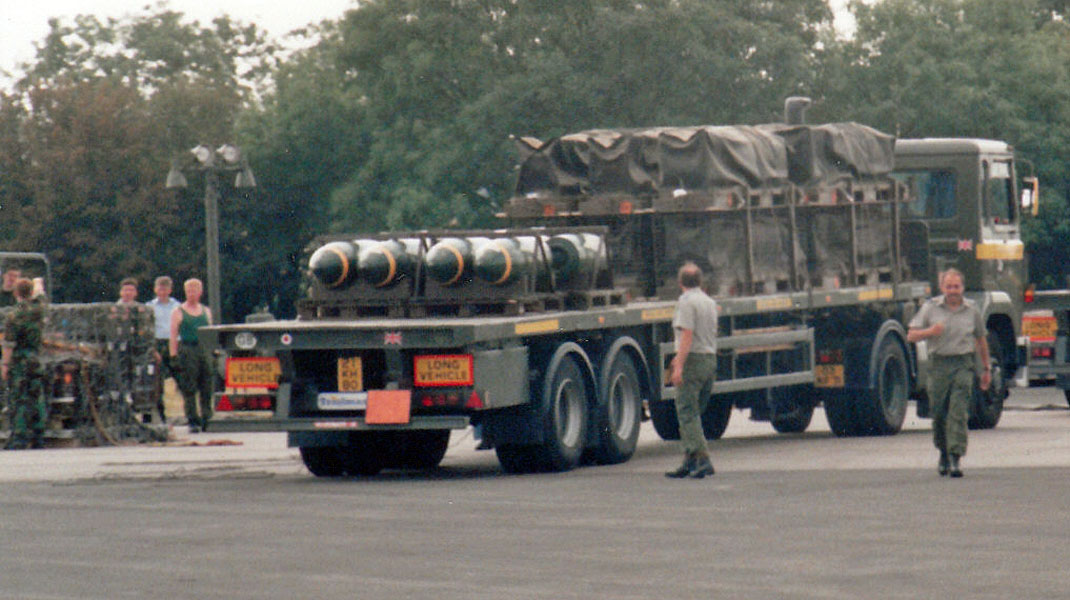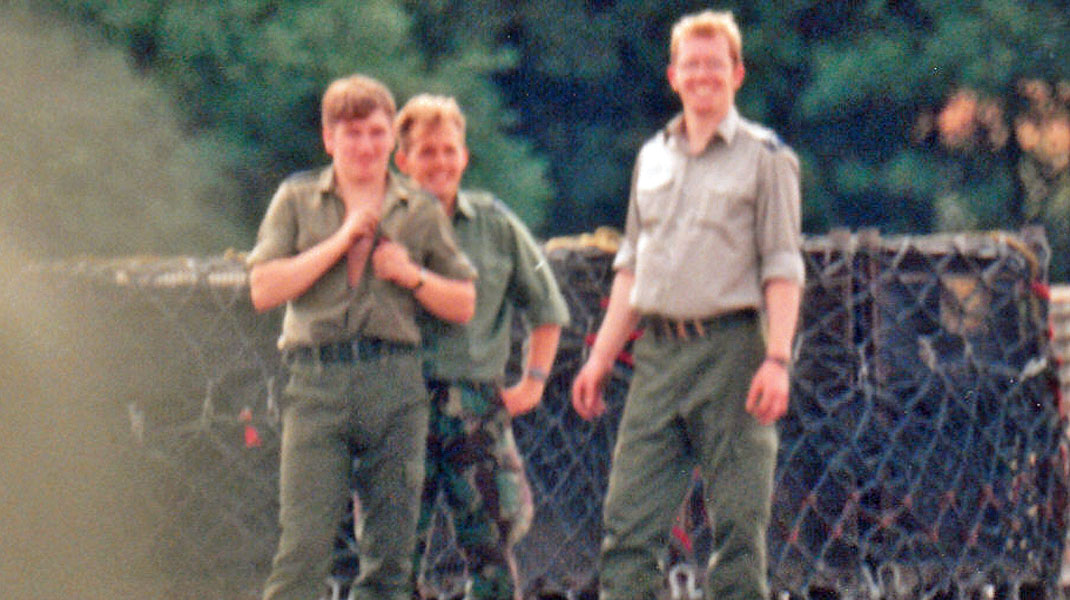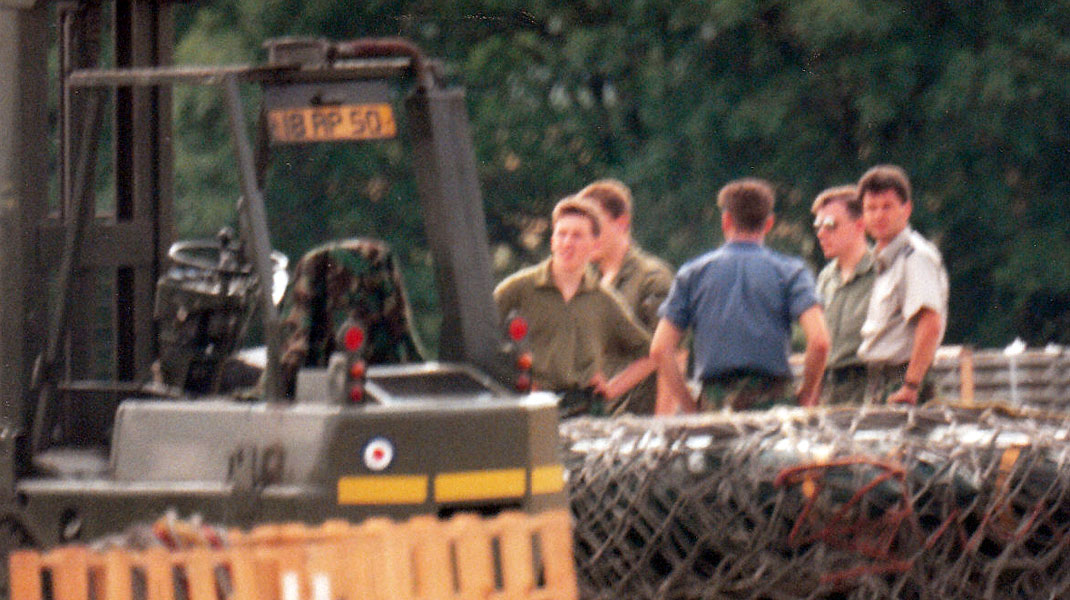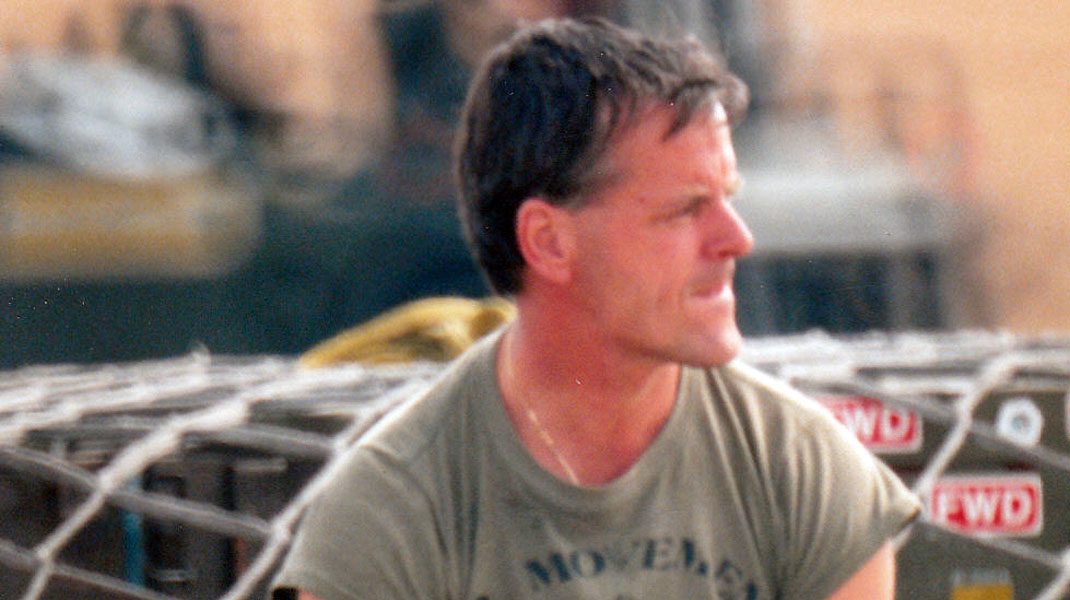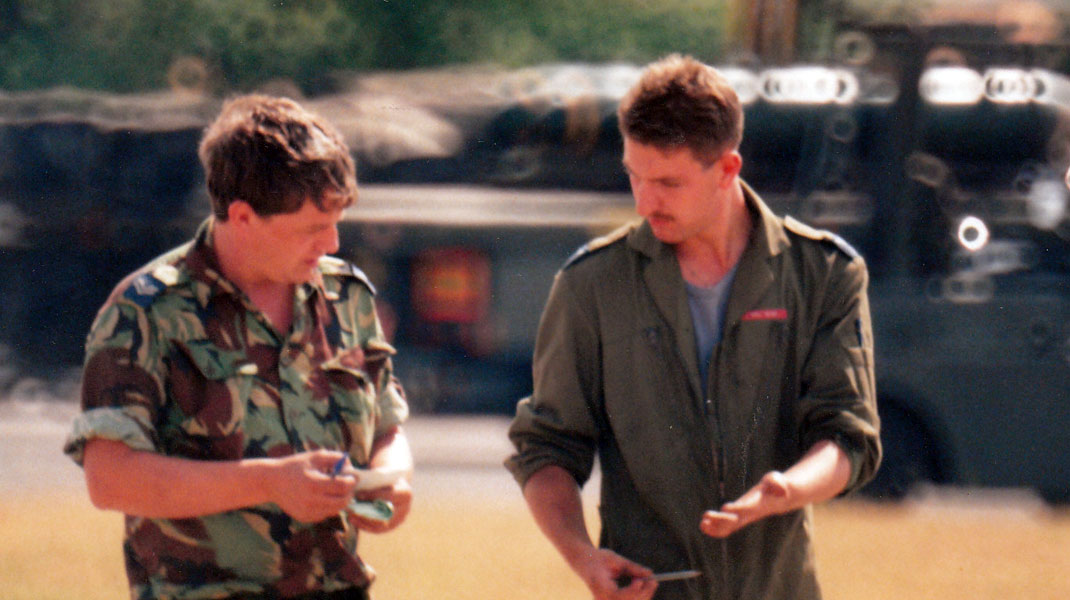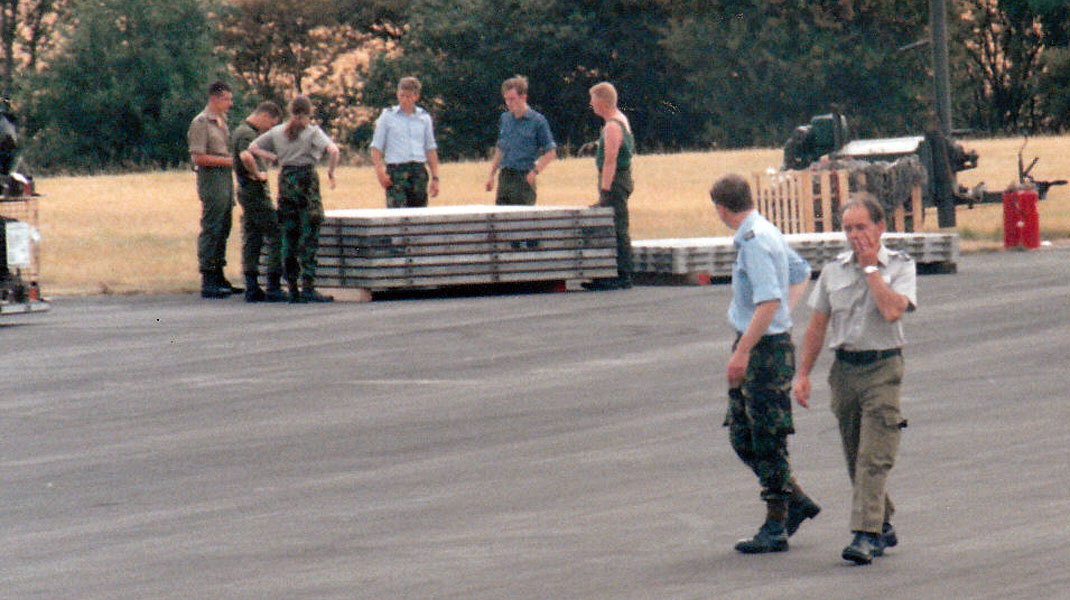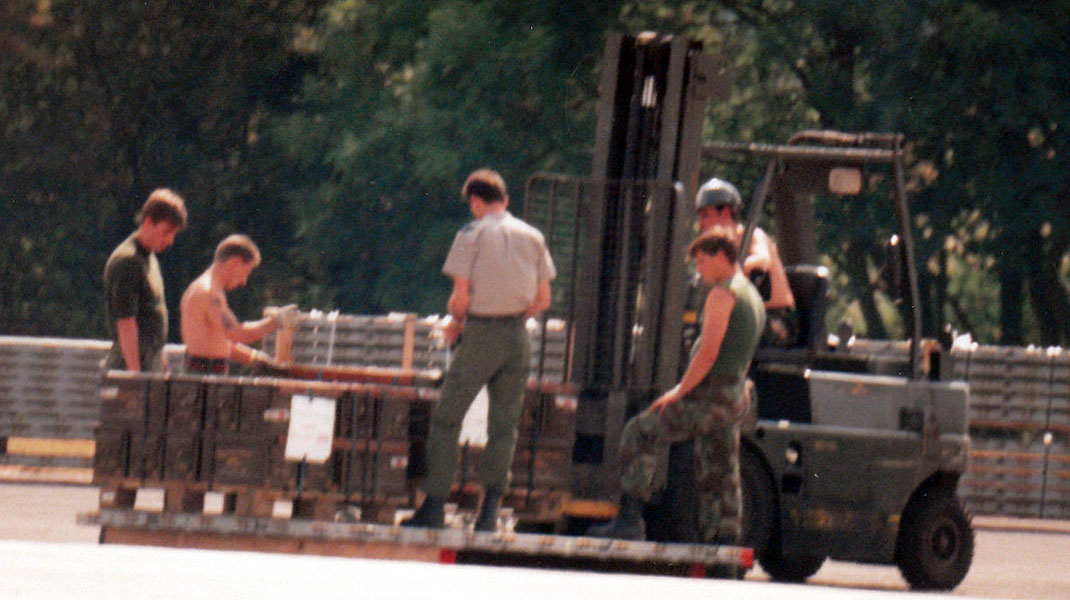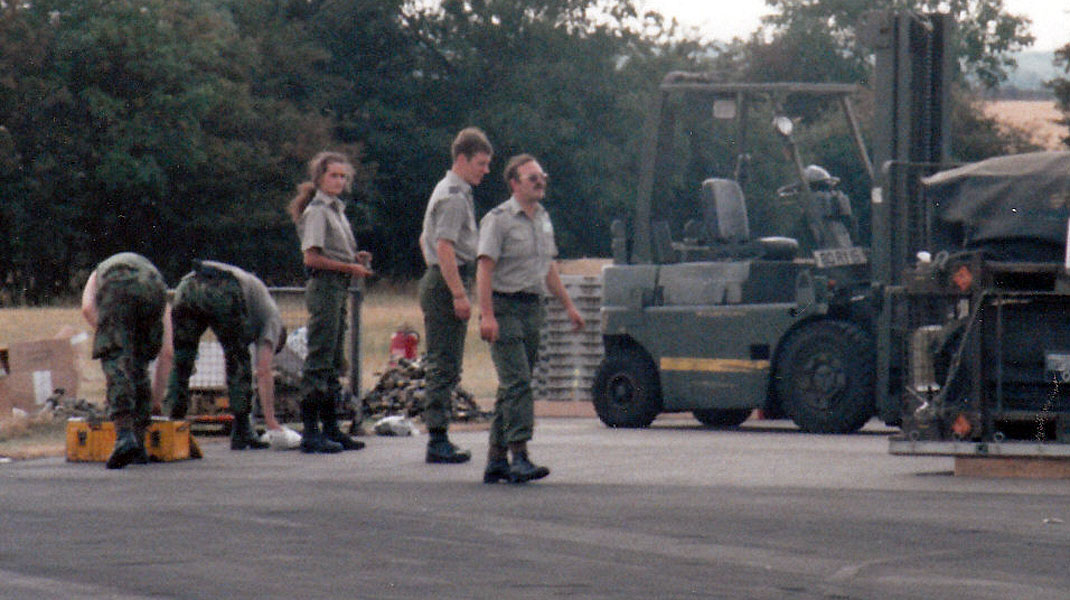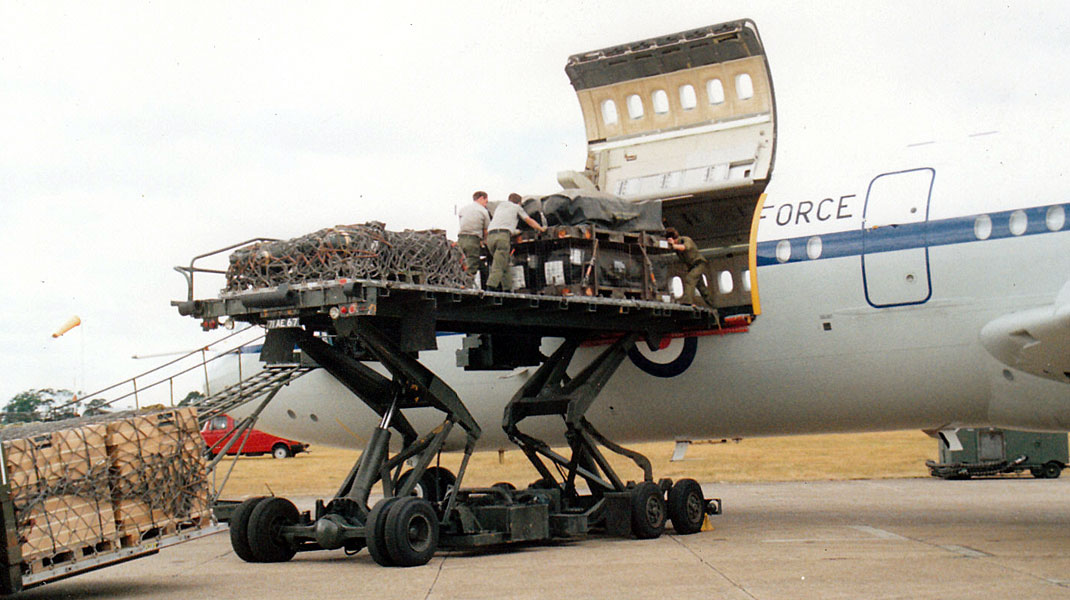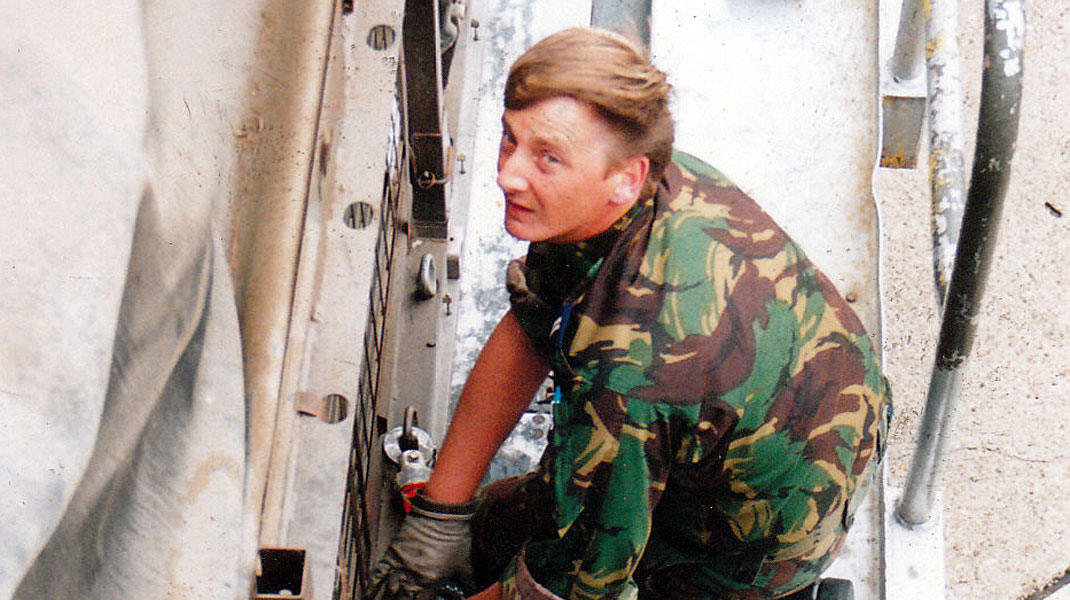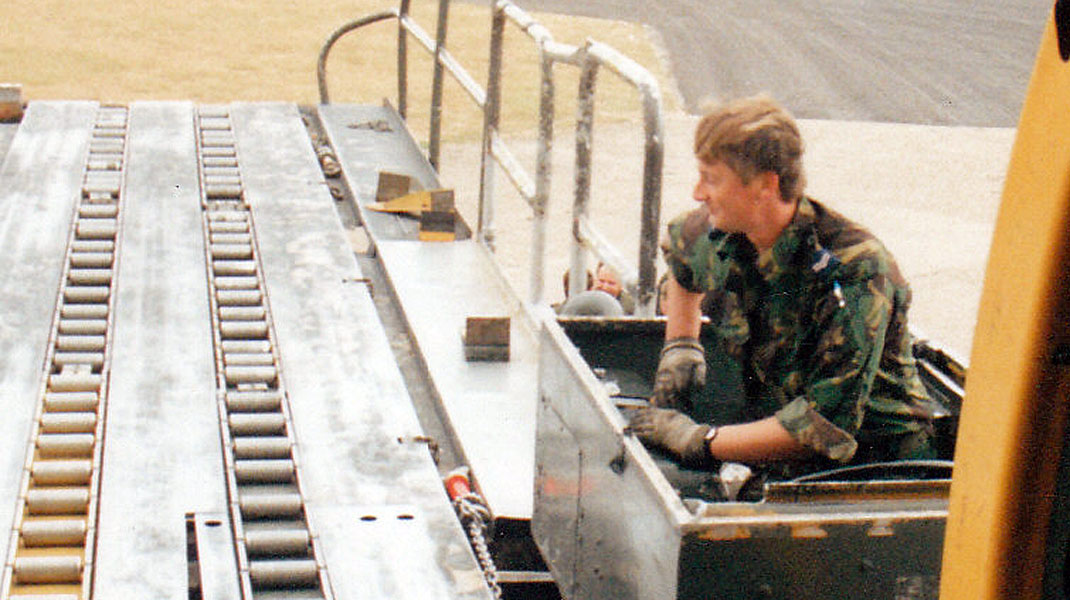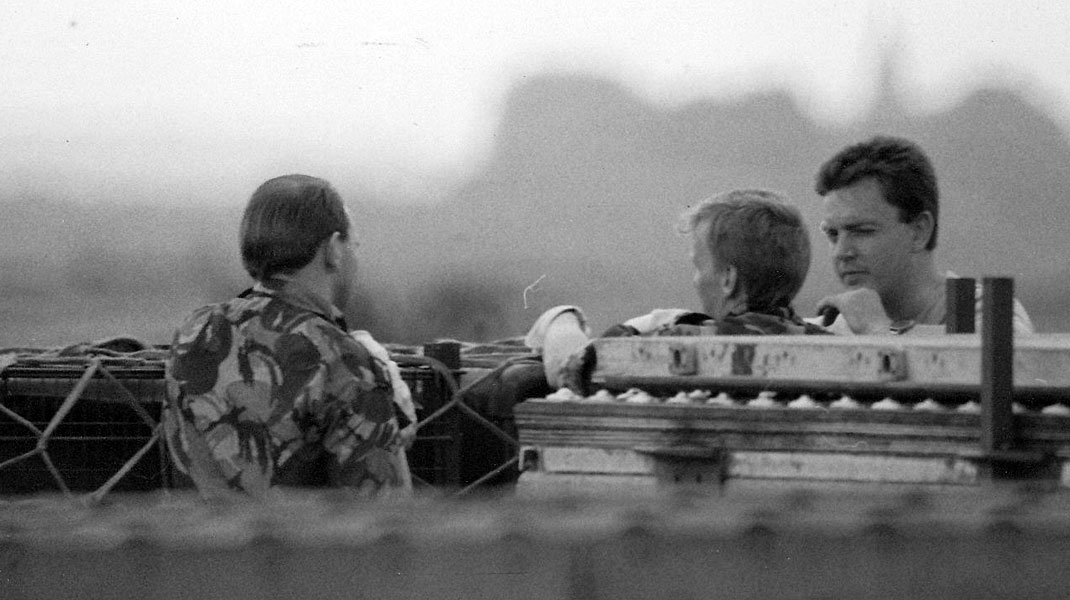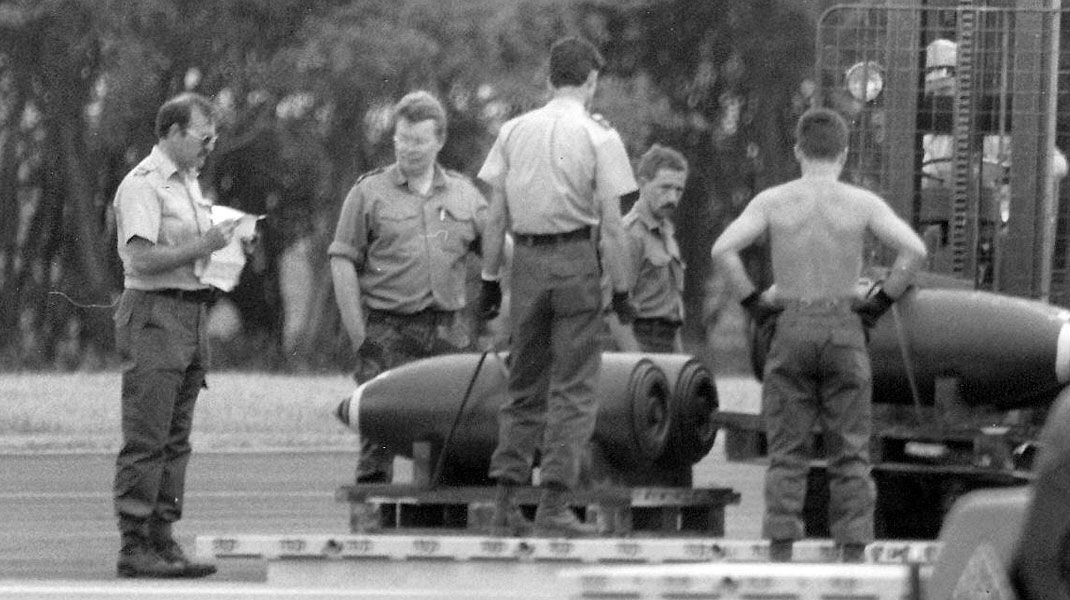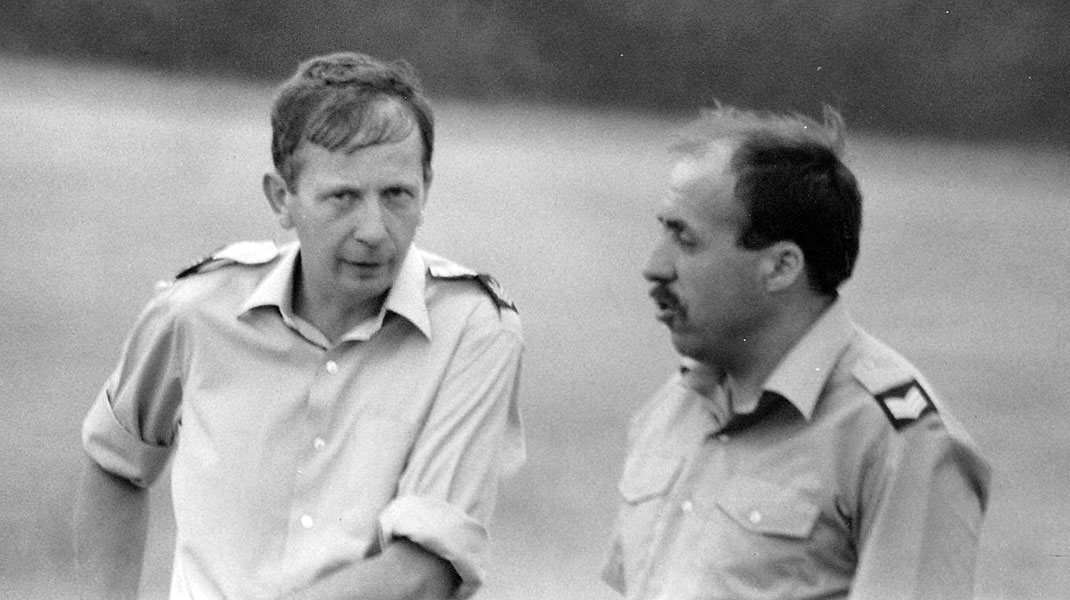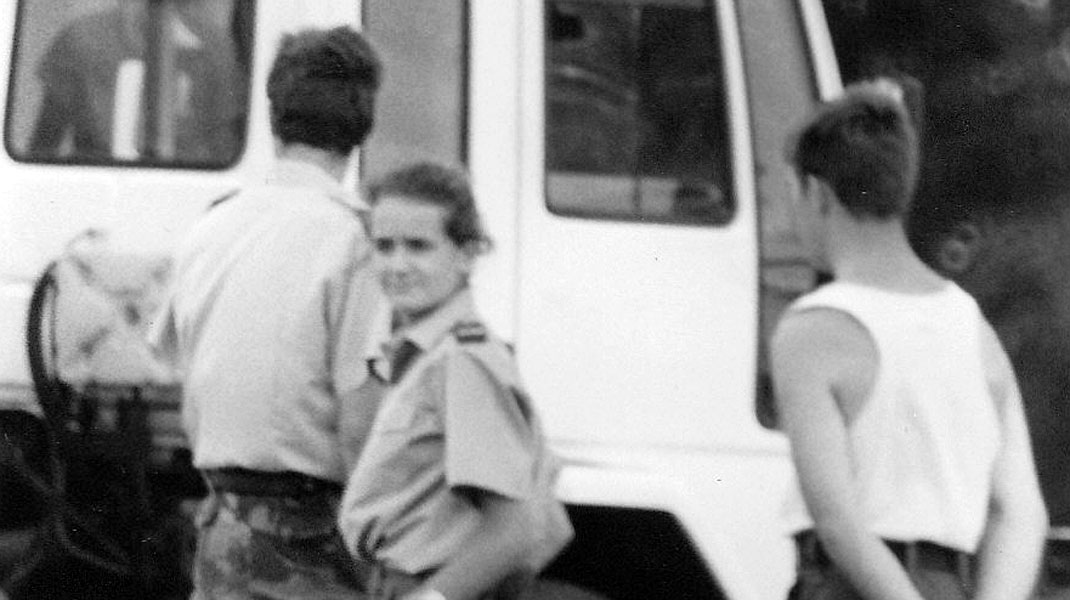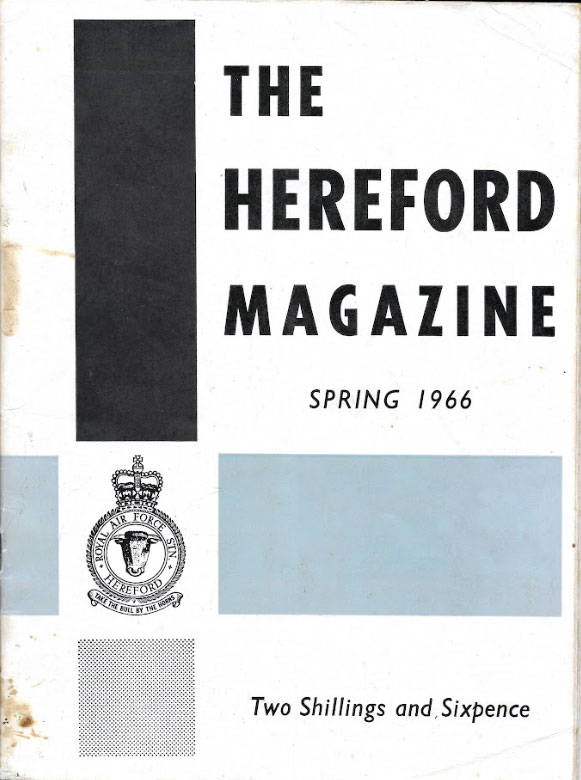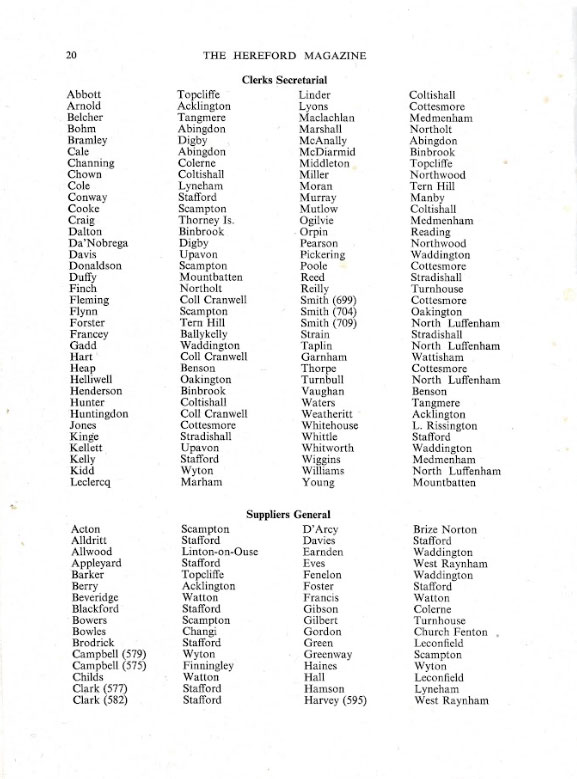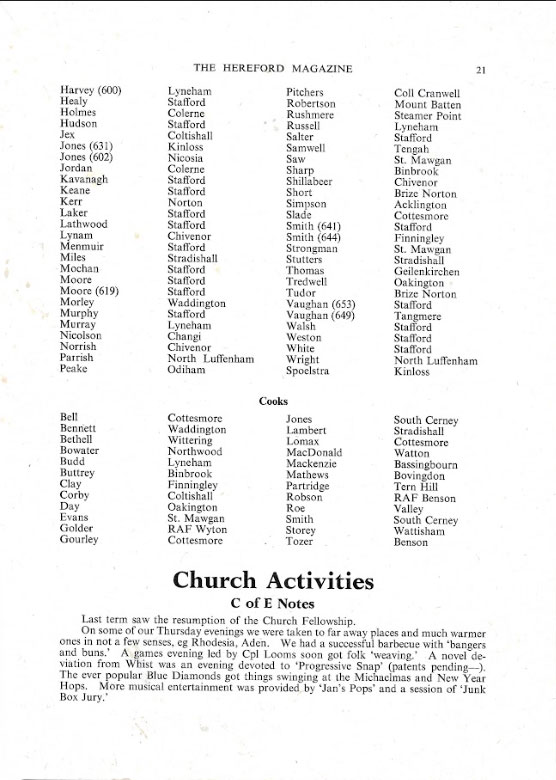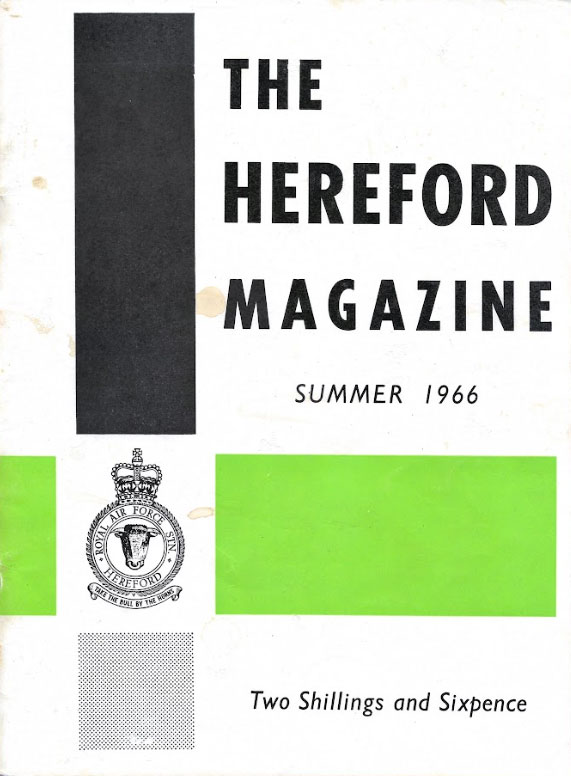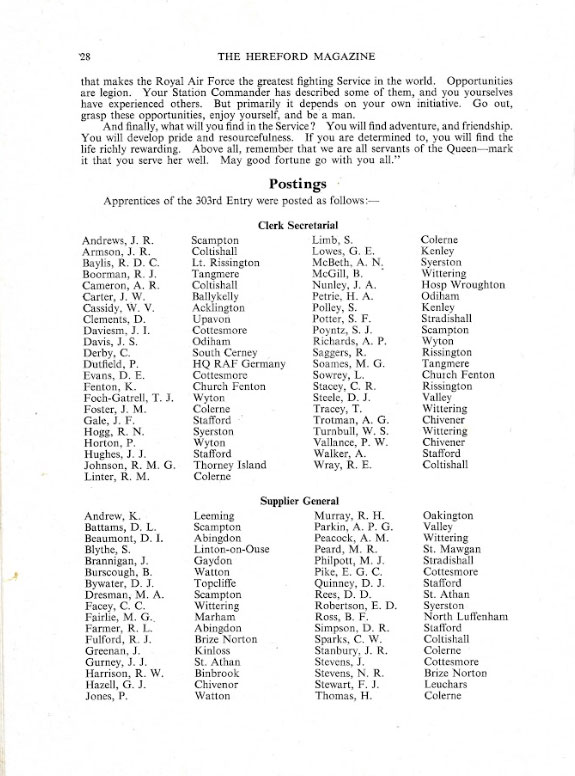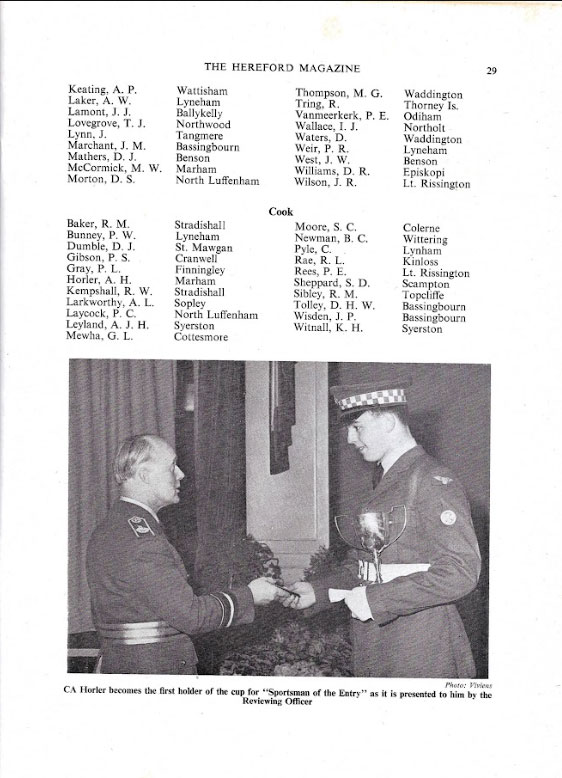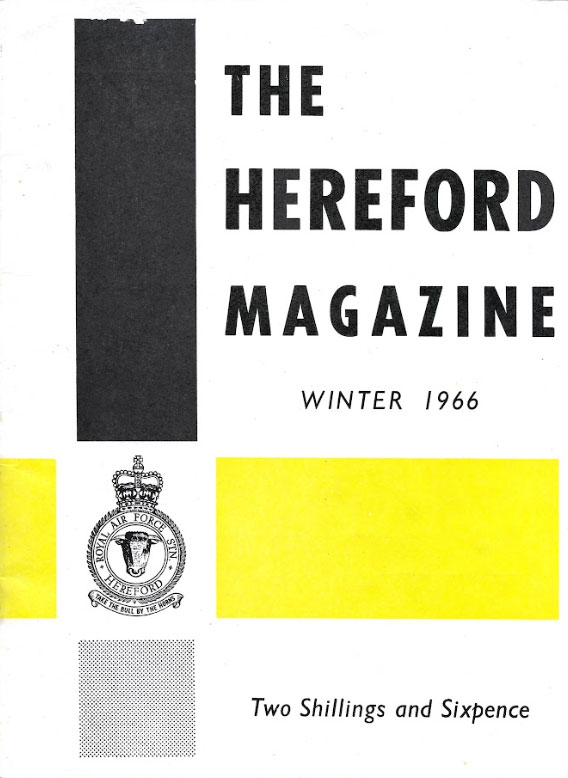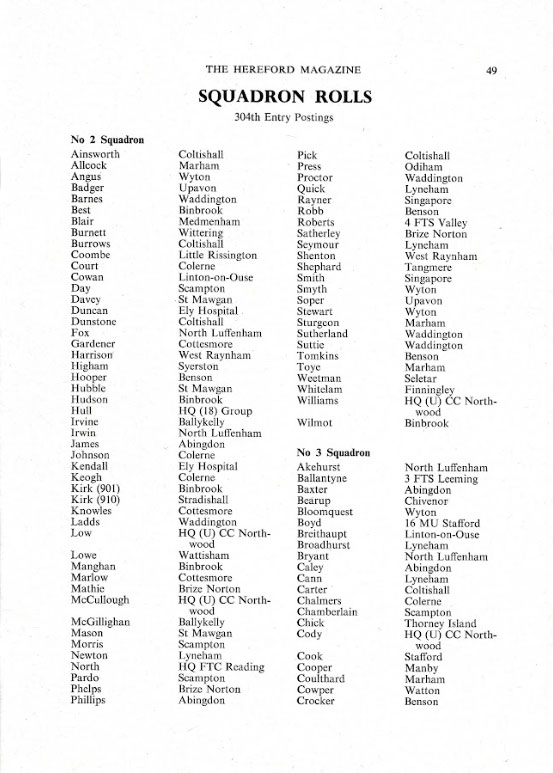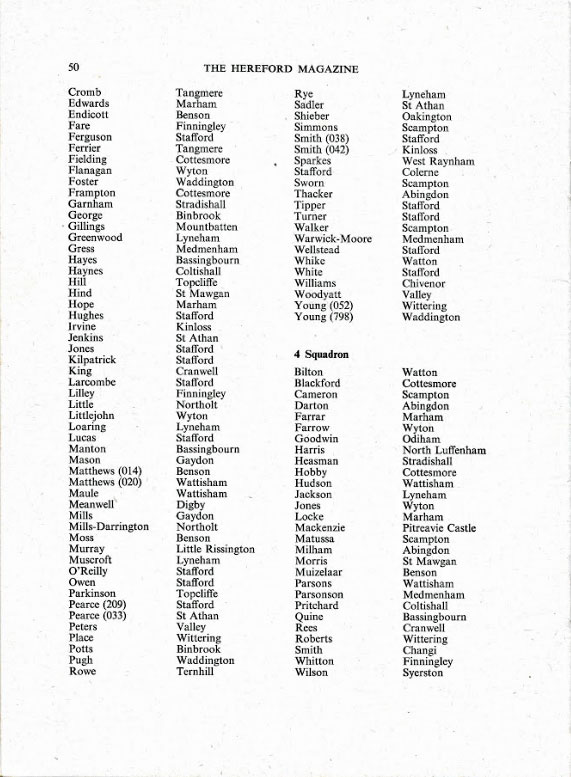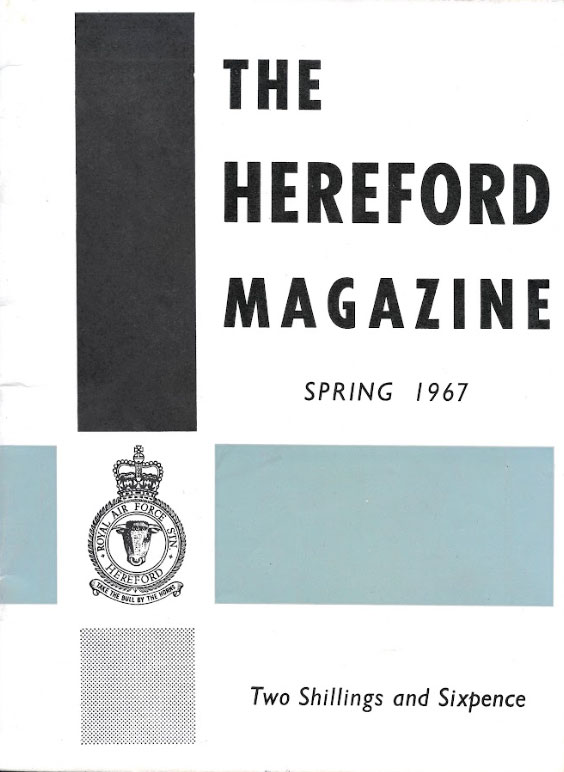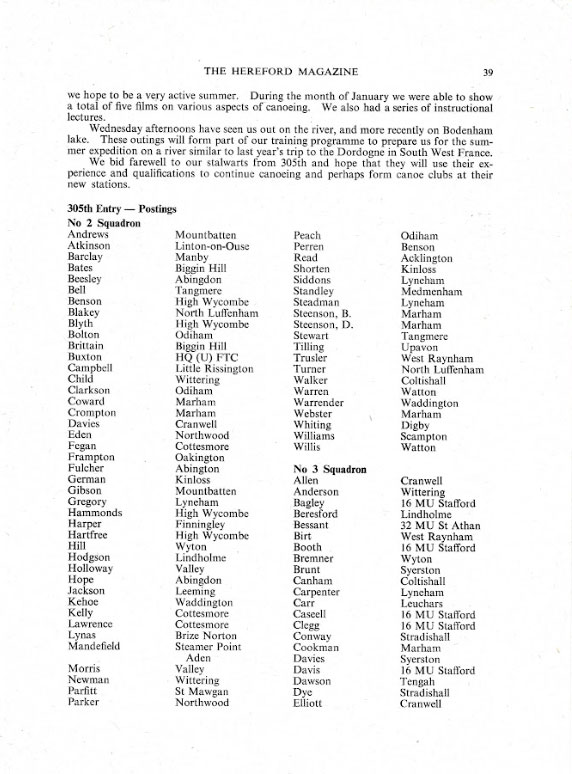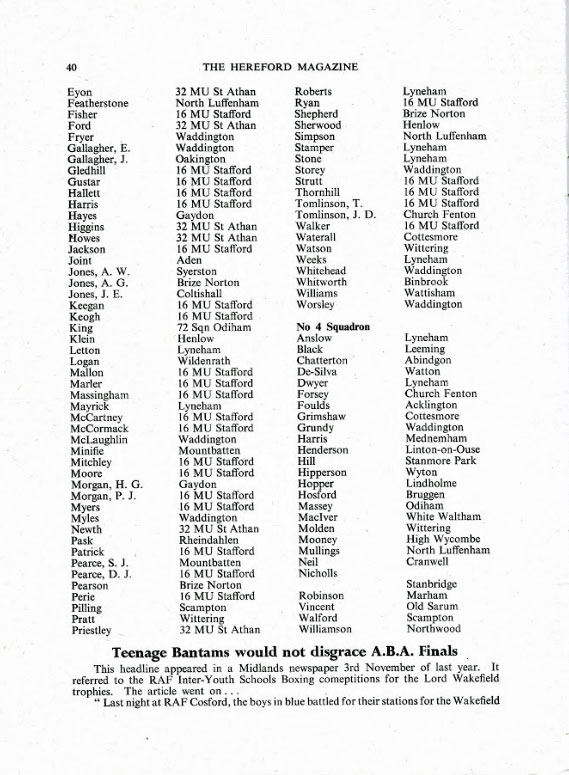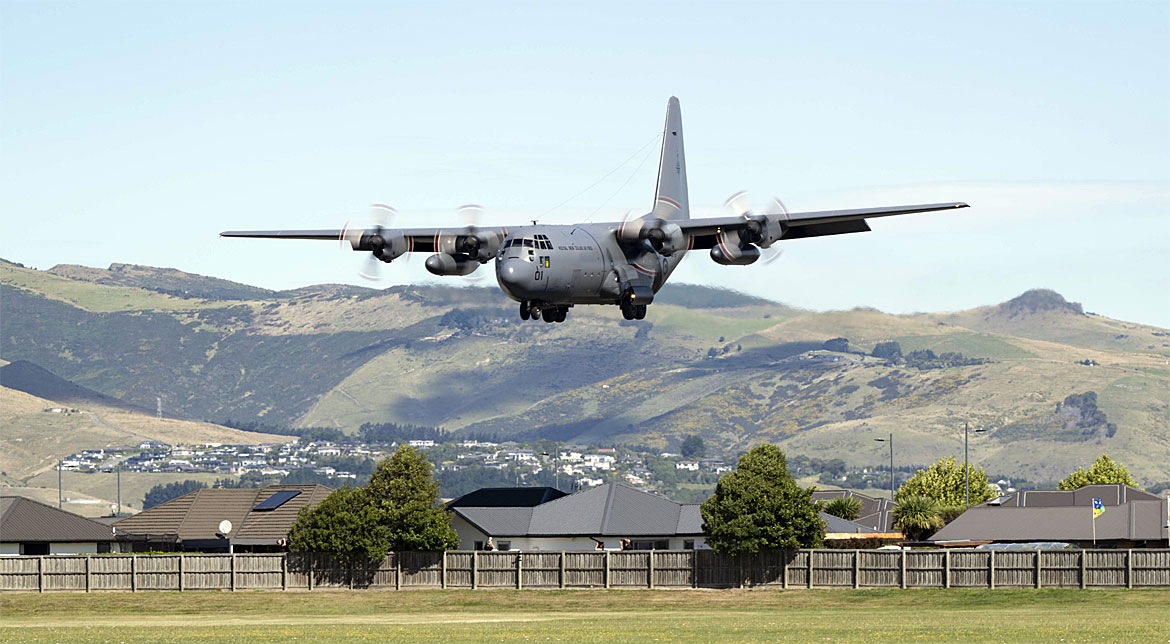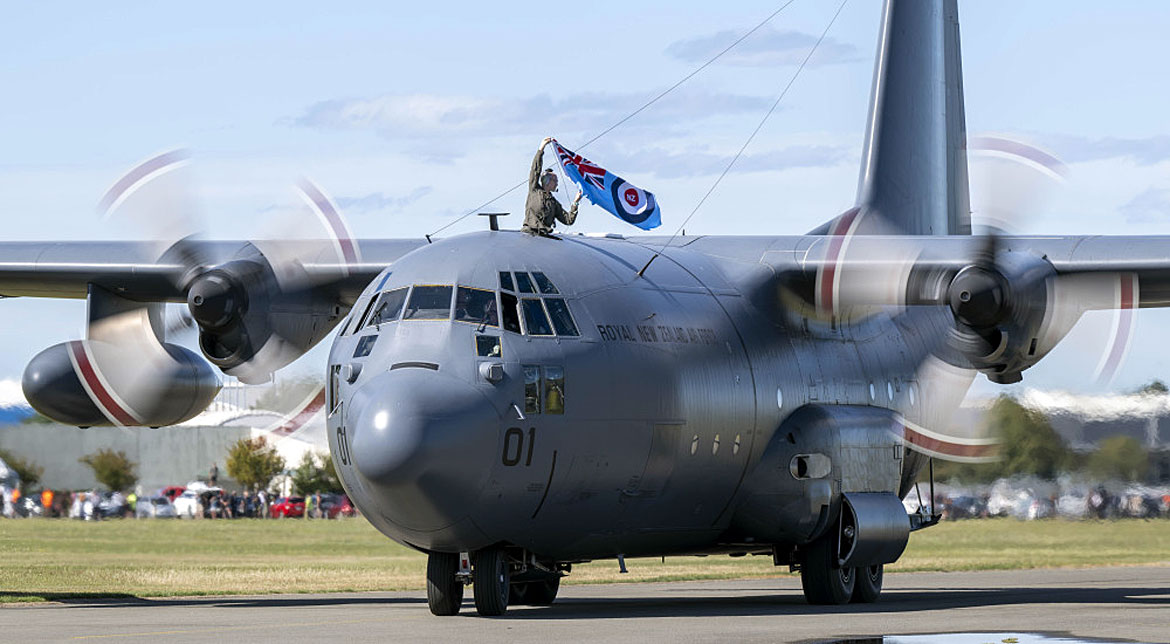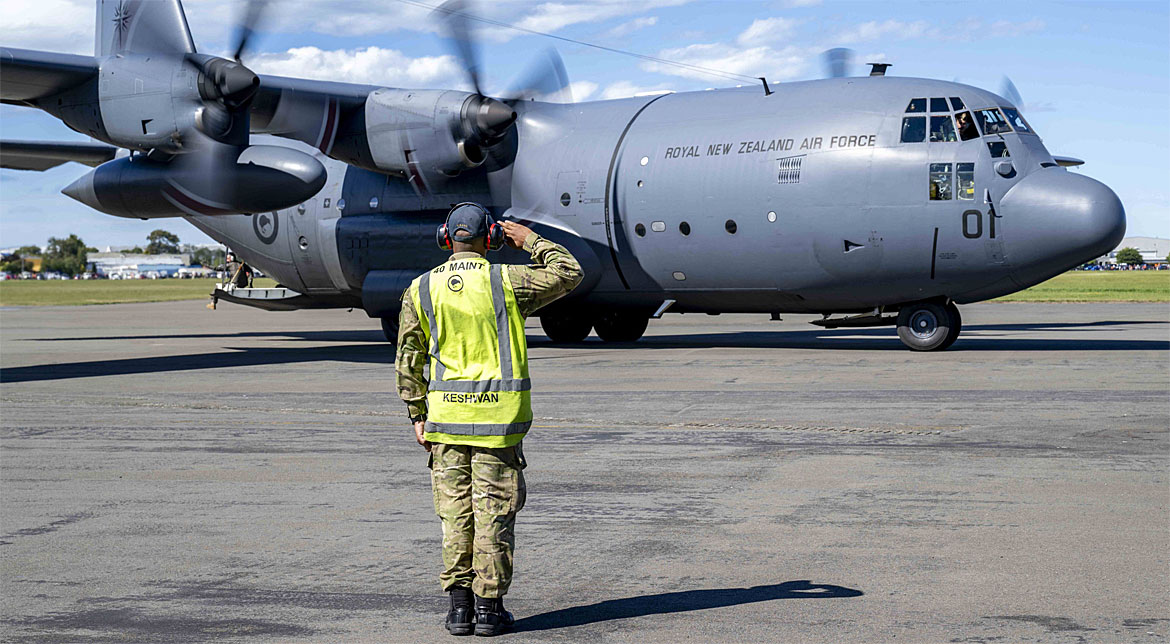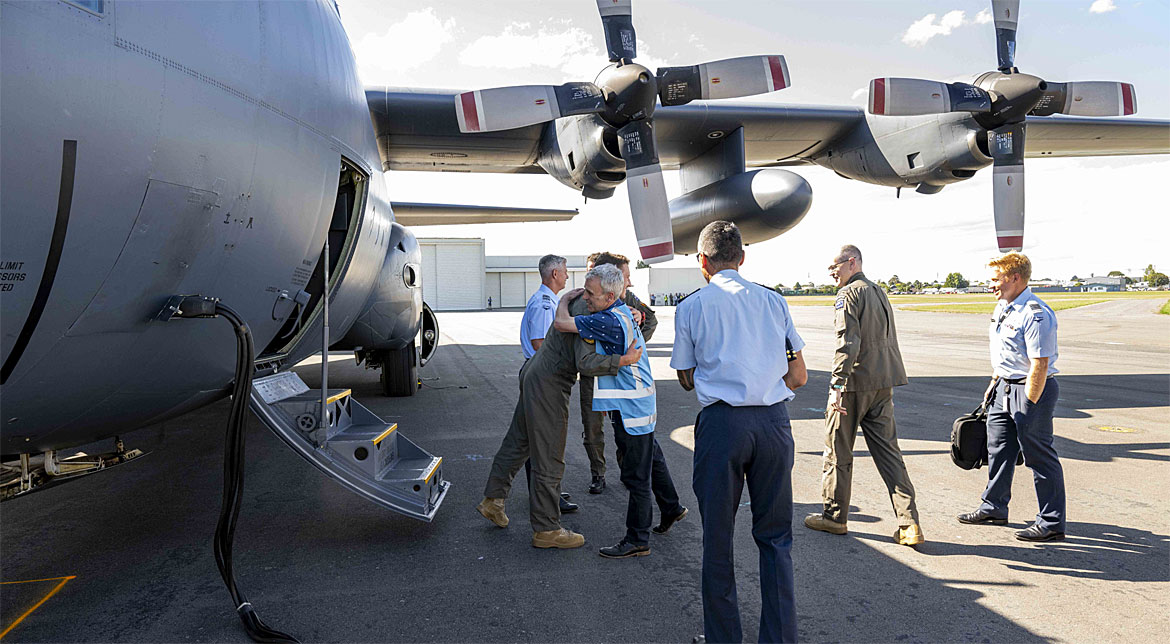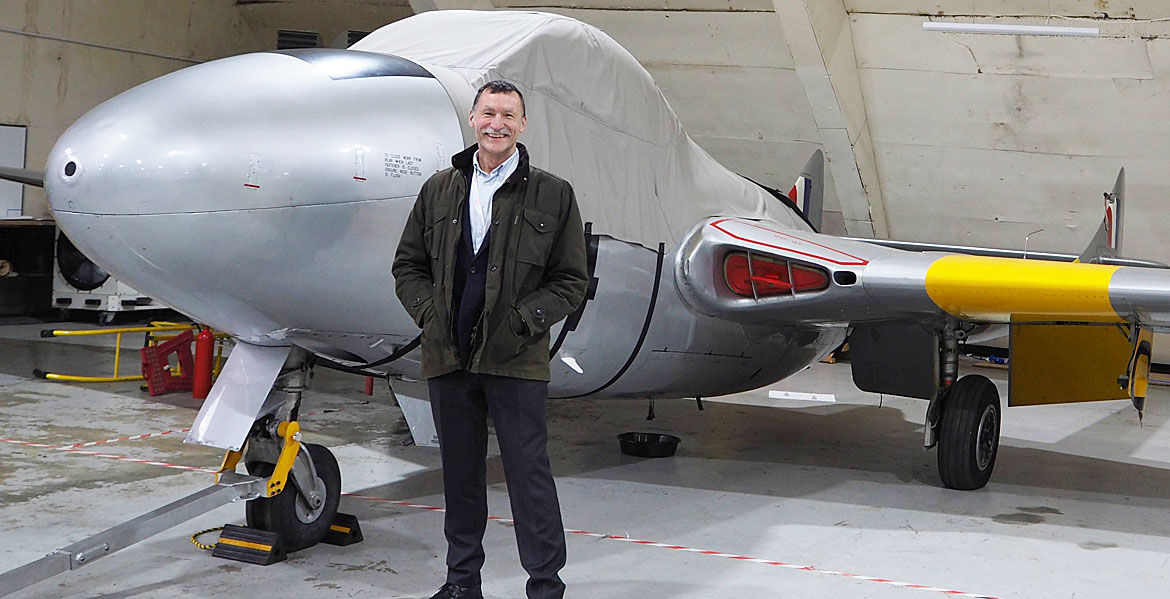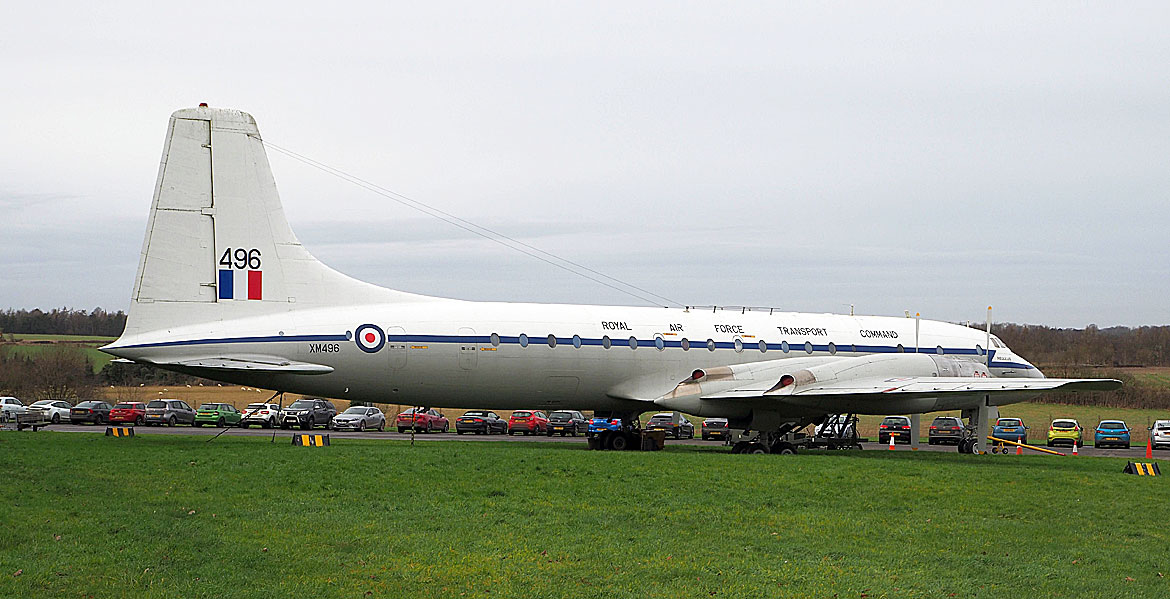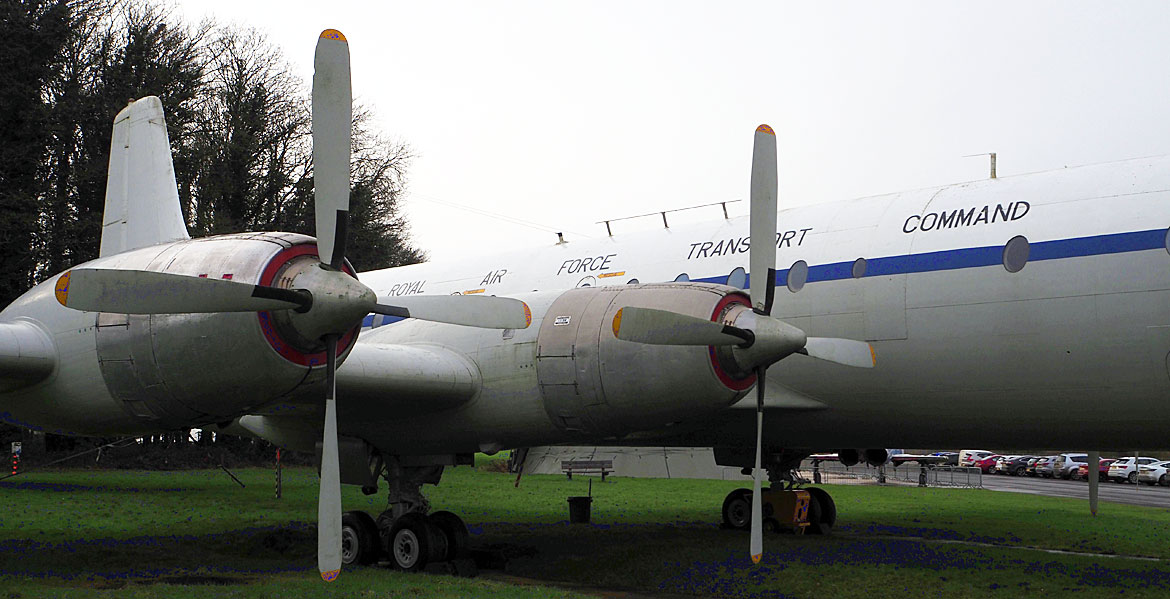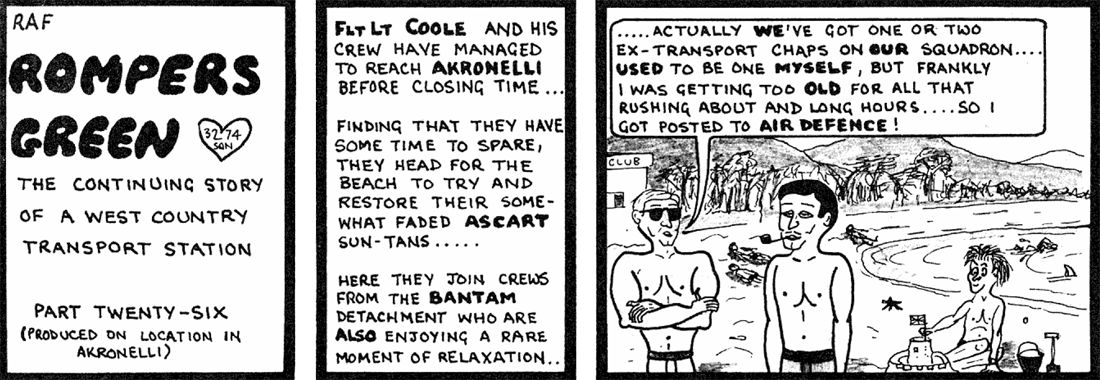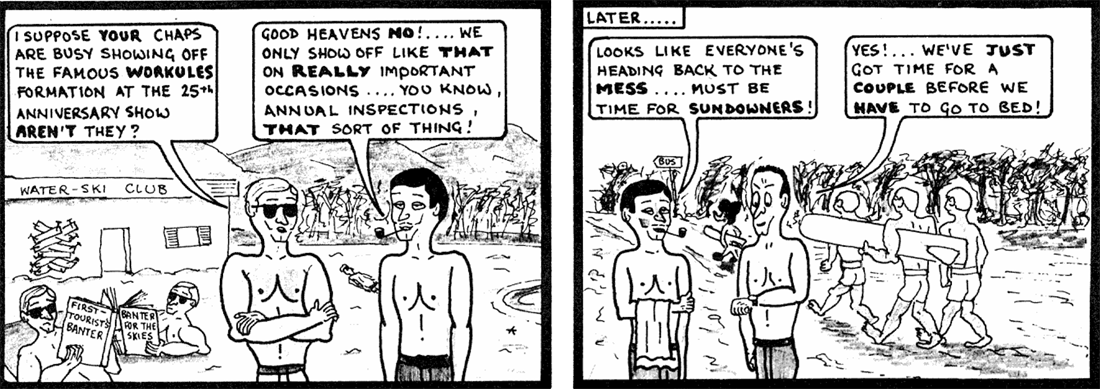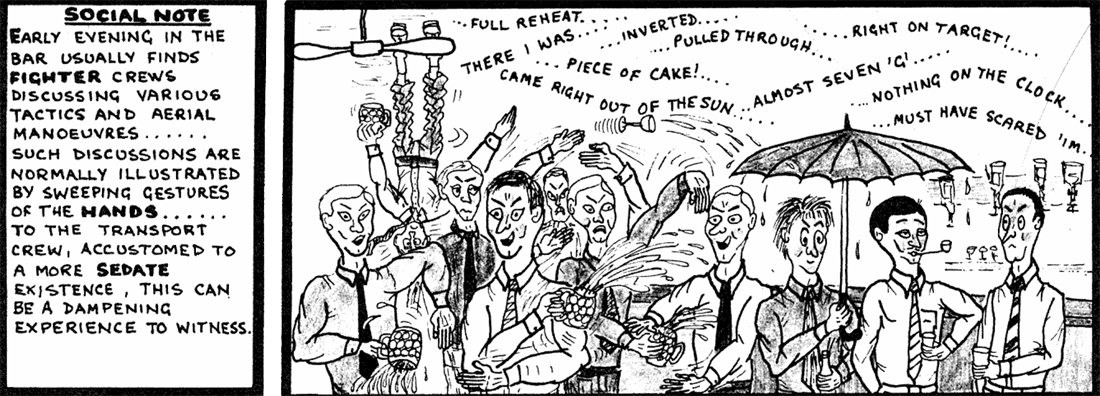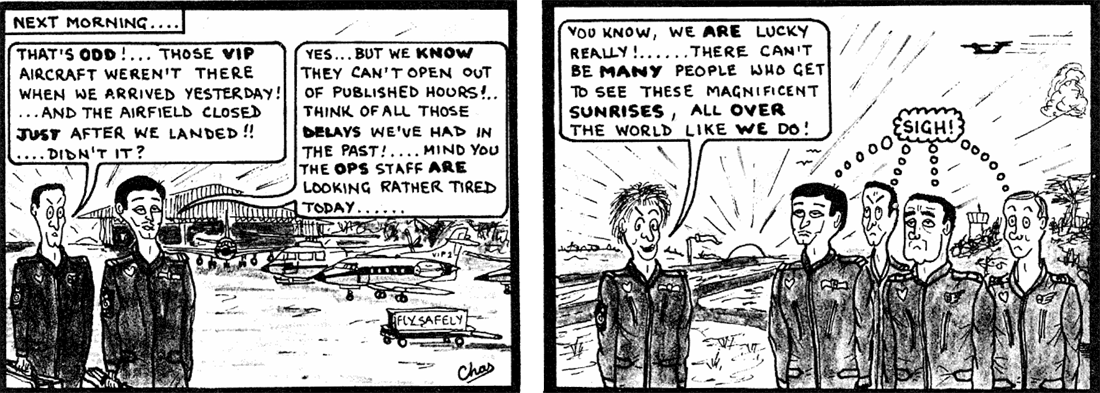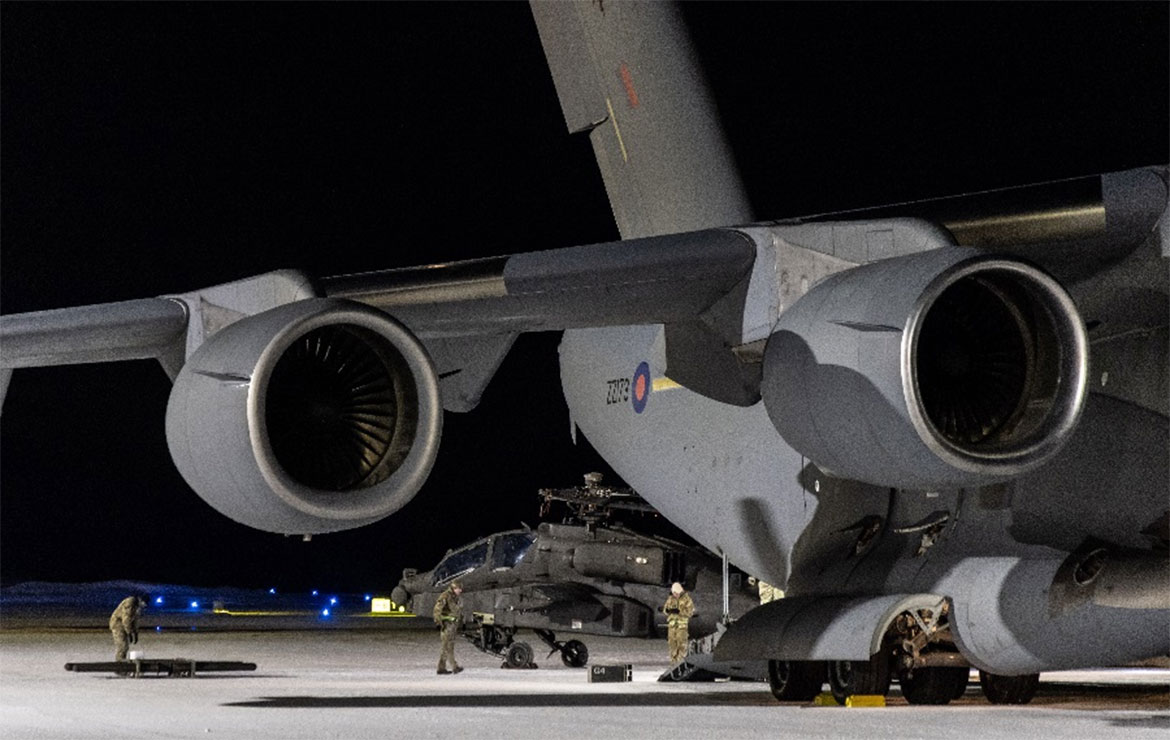

RAF Sergeant hailed a hero by British Defence Attaché to the US

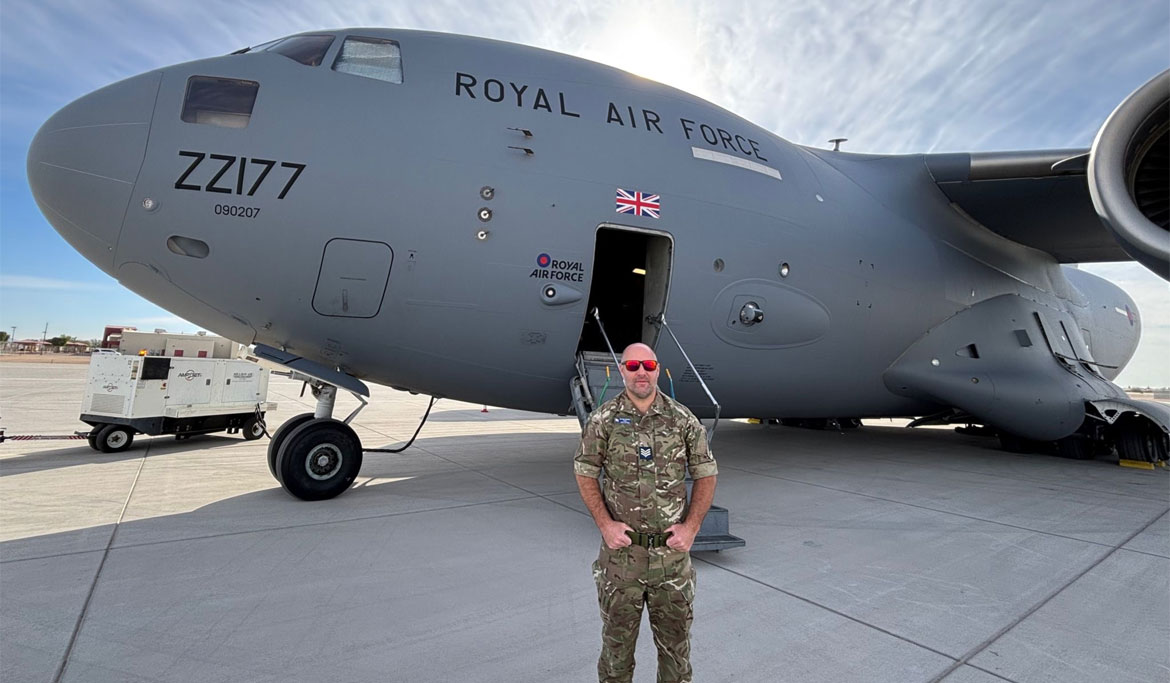
A Royal Air Force Sergeant has been hailed a hero after running several miles through snow and ice to rescue an American woman who plunged into a ravine in Utah.
Sergeant Benstead, an RAF Liaison Officer based in Las Vegas - ran through Utah’s snowy mountains to raise the alarm and save a visiting tourist from Canada from a potentially life-threatening situation.
Sergeant Benstead was halfway through a challenging 12km a hike into ‘The Subway’ in Zion National Park with his partner when he heard the woman cry, then saw as she tumbled down into the wet riverbed in freezing conditions. Drawing on his military experience, he made his way down to her, identifying she had sustained severe injuries. Remaining calm under pressure, he knew he would have to run some miles to gain satellite service to relay detail of the accident, including her injuries and precise location.
Sergeant Benstead said, "My military training helped me stay calm and focussed on what I needed to do. I have taken part in many challenging expeditions and Adventure Training which has pushed me out of my comfort zone, which helped build me as a robust character when faced with challenges at work or whilst off duty. I did what most people would have done at that particular time – I may just have reacted quicker and helped the rescue to go as smooth as it possibly could."
Thanks to Sergeant Benstead's quick response to the situation an air ambulance was deployed to provide the injured woman with the treatment required.
Rear Admiral Tim Woods, British Defence Attaché to the US said, “Sergeant Benstead is an absolute hero! I commend his quick-thinking to save this lady from a potentially life-threatening situation. As one of our hundreds of British Defence Staff stationed in the US, he should be very proud to be recognised for his actions. He went well above and beyond, and demonstrated incredible physical courage.”
Flight Lieutenant Timms, OC Permanent Air Movements Detachment USA West said, “Sergeant Benstead’s actions on the day in question were simply exceptional. His valiant efforts embody the highest values and standards of the Royal Air Force and reflect the fortitude and resilience we expect from our service personnel. I am immensely proud to work alongside him, and am delighted that his efforts have been duly recognised. Most importantly, his professionalism and composure ensured the injured woman received the urgent care she required, providing much reassurance to both her and her husband.”
The Royal Air Force has many personnel deployed in roles across the globe, including the RAF Liaison Officers in the Permanent Air Movements Detachments which are part of No.1 Air Mobility Wing. The RAF Liaison Officers provide crucial support from host and partner nations to enable Air Mobility Force operations and exercises and assist UK Head Quarters during the planning and execution stages.
raf.mod.uk
Sergeant Benstead, an RAF Liaison Officer based in Las Vegas - ran through Utah’s snowy mountains to raise the alarm and save a visiting tourist from Canada from a potentially life-threatening situation.
Sergeant Benstead was halfway through a challenging 12km a hike into ‘The Subway’ in Zion National Park with his partner when he heard the woman cry, then saw as she tumbled down into the wet riverbed in freezing conditions. Drawing on his military experience, he made his way down to her, identifying she had sustained severe injuries. Remaining calm under pressure, he knew he would have to run some miles to gain satellite service to relay detail of the accident, including her injuries and precise location.
Sergeant Benstead said, "My military training helped me stay calm and focussed on what I needed to do. I have taken part in many challenging expeditions and Adventure Training which has pushed me out of my comfort zone, which helped build me as a robust character when faced with challenges at work or whilst off duty. I did what most people would have done at that particular time – I may just have reacted quicker and helped the rescue to go as smooth as it possibly could."
Thanks to Sergeant Benstead's quick response to the situation an air ambulance was deployed to provide the injured woman with the treatment required.
Rear Admiral Tim Woods, British Defence Attaché to the US said, “Sergeant Benstead is an absolute hero! I commend his quick-thinking to save this lady from a potentially life-threatening situation. As one of our hundreds of British Defence Staff stationed in the US, he should be very proud to be recognised for his actions. He went well above and beyond, and demonstrated incredible physical courage.”
Flight Lieutenant Timms, OC Permanent Air Movements Detachment USA West said, “Sergeant Benstead’s actions on the day in question were simply exceptional. His valiant efforts embody the highest values and standards of the Royal Air Force and reflect the fortitude and resilience we expect from our service personnel. I am immensely proud to work alongside him, and am delighted that his efforts have been duly recognised. Most importantly, his professionalism and composure ensured the injured woman received the urgent care she required, providing much reassurance to both her and her husband.”
The Royal Air Force has many personnel deployed in roles across the globe, including the RAF Liaison Officers in the Permanent Air Movements Detachments which are part of No.1 Air Mobility Wing. The RAF Liaison Officers provide crucial support from host and partner nations to enable Air Mobility Force operations and exercises and assist UK Head Quarters during the planning and execution stages.
raf.mod.uk
Sergeant Benstead is an RAF Liaison Officer who's currently stationed in Las Vegas in Nevada

From: Steve Tomlinson, Tenerife, QLD
Subject: Re: UKMAMS OBA OBB #013125
Hi Tony,
Another great read, many thanks old chap.
In reaction to a couple of features in last month's publication; it might be a bit late but I thought you might like to see three photos I have of the great Charlie Marlow, not the best quality, but you can tell it's him. One-with and one-without make-up! We were all on our "Mobile" course at MAMS, with Graham Howard, Kevin Timms and his "Band of Merry ATC Warriors" also featuring Brian Harper as Charlie's side-kick!
Subject: Re: UKMAMS OBA OBB #013125
Hi Tony,
Another great read, many thanks old chap.
In reaction to a couple of features in last month's publication; it might be a bit late but I thought you might like to see three photos I have of the great Charlie Marlow, not the best quality, but you can tell it's him. One-with and one-without make-up! We were all on our "Mobile" course at MAMS, with Graham Howard, Kevin Timms and his "Band of Merry ATC Warriors" also featuring Brian Harper as Charlie's side-kick!
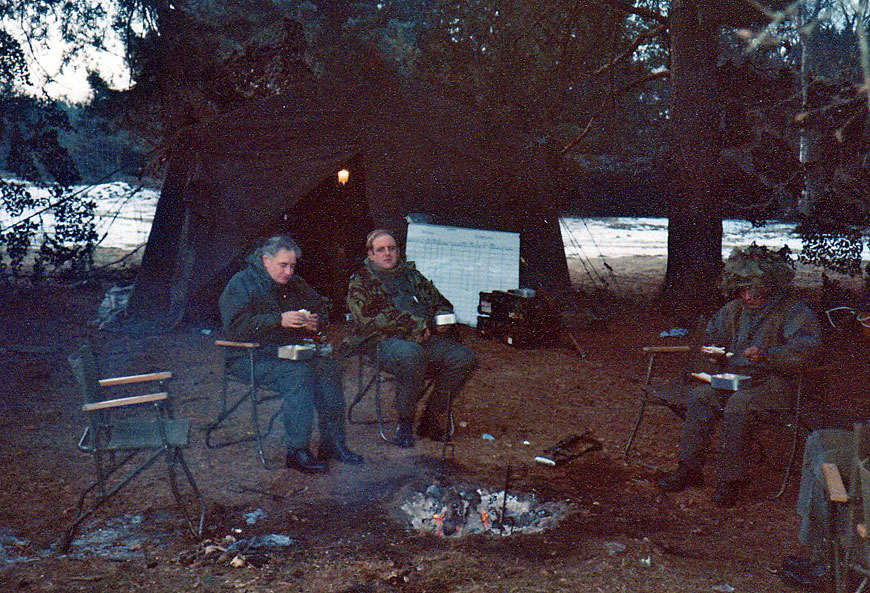

Secondly, reference Rich Bass's snippet on Op Granby (please send me the video!), I was there! All the photo's I have of that time are attached. I remember that time well. Rich ran MSF, with the sage help of Jim Buchanan (good one of him in the folder). I was Tech Supply Flt, my post had to have a qualified Fuels & Movs officer as I had all the station's POL and had to back up Rich when he was deployed with the Harriers.
Another link to the past, in one of the enclosed photo's, the Loadmaster at the top of the VC-10 steps, with the headset [Frame 6], was a very old friend of mine from the 70's. I first met Annie when I was on detachment with 42 Sqn to Luqa, Malta, in the days when we still had an Empire! I know "Empire" is a bad word in the new "woke" world we live in, but in those days we had fun! She was married to Jim, an Air Radar Sgt on 203 Sqn that I worked with. Annie and Jim then got themselves posted to St Mawgan where he and I worked together on the Nimrod Line.
Annie was a Corporal Air Traffic Control Assistant in the Tower. All I remember about that time (75-77), were that the summers were hot and went on forever (the tourists, or Emmets as we used to call them, all went home in September but the hot weather kept going until Christmas!). Loads of overseas detachments mostly to the Med, Norway or "Cod War" in Scotland(!) and loads of parties when we got back, if only to reduce the amount of DF's that were building-up at home!
Cheers!
Steve (Tommo)
Annie was a Corporal Air Traffic Control Assistant in the Tower. All I remember about that time (75-77), were that the summers were hot and went on forever (the tourists, or Emmets as we used to call them, all went home in September but the hot weather kept going until Christmas!). Loads of overseas detachments mostly to the Med, Norway or "Cod War" in Scotland(!) and loads of parties when we got back, if only to reduce the amount of DF's that were building-up at home!
Cheers!
Steve (Tommo)

A Few Days Later...
From: Steve Tomlinson, Tenerife, QLD
Subject: Re: UKMAMS OBA OBB #013125
Many thanks mate, film received OK.
It's good to see some shots of yours truly on the aircraft, where I appear to have darker hair than I do now but I still have far too much baggage around the waist! Happy days! I can't remember how many VC10's we turned around in the 3 days? We definitely had 2 major bomb dumps at Wittering, if not 3, we emptied the lot in the 3 days! This included the Strike Command reserve of munitions like JP233, BL755 cluster weapons & 1000lb bombs, I think we also sent a lot of 28mm SNEB Rockets and 30mm ammo. All in all, it worked out at just under 1 million lb's weight of munitions in the 3 days.
One peculiarity at Wittering, we had a big lump of concrete called the RIC built into one of the pans, in the shape of an "H", it was approx. 4' high and fitted with old roller conveyor on which pallets could be built & stored, it is in the background of the shot where they are weighing the pallet with the 10K Forks. It was a really old piece of kit and OC Supply was really keen for us to use it but after a conflab with Jim, Rich & myself, we thought it would be too dangerous for the troops to be building pallets 4' off the ground, we'd have troops falling off everywhere.
Bearing in mind that most of the guys in the film are just regular Supply bods, not professional seasoned Movers (although they all loved getting their hands dirty and being part of the War effort!). Anyway, we decided to do a "Calne Strip" type outload where the 40' Trucks brought the weapons from the bomb dumps up to the airfield. Dunnage, with aircraft pallets on top, was laid either side of the Pan, the trucks drove up the centre and the weapons were forked off onto the pallets, either side of the truck. It was a lot safer for the troops to be working at ground level rather than 4' in the air!
I remember doing exactly the same on the Calne Strip at Lyneham for a few TACEVAL outloads in the mid-80's. One thing we did find out halfway through the outload, that we chose to ignore until it was all over, the pan area where we were working, although reasonably remote, was only licenced for 16,000 Lbs NEQ!
Thanks again for the film, Cheers,
Steve
Subject: Re: UKMAMS OBA OBB #013125
Many thanks mate, film received OK.
It's good to see some shots of yours truly on the aircraft, where I appear to have darker hair than I do now but I still have far too much baggage around the waist! Happy days! I can't remember how many VC10's we turned around in the 3 days? We definitely had 2 major bomb dumps at Wittering, if not 3, we emptied the lot in the 3 days! This included the Strike Command reserve of munitions like JP233, BL755 cluster weapons & 1000lb bombs, I think we also sent a lot of 28mm SNEB Rockets and 30mm ammo. All in all, it worked out at just under 1 million lb's weight of munitions in the 3 days.
One peculiarity at Wittering, we had a big lump of concrete called the RIC built into one of the pans, in the shape of an "H", it was approx. 4' high and fitted with old roller conveyor on which pallets could be built & stored, it is in the background of the shot where they are weighing the pallet with the 10K Forks. It was a really old piece of kit and OC Supply was really keen for us to use it but after a conflab with Jim, Rich & myself, we thought it would be too dangerous for the troops to be building pallets 4' off the ground, we'd have troops falling off everywhere.
Bearing in mind that most of the guys in the film are just regular Supply bods, not professional seasoned Movers (although they all loved getting their hands dirty and being part of the War effort!). Anyway, we decided to do a "Calne Strip" type outload where the 40' Trucks brought the weapons from the bomb dumps up to the airfield. Dunnage, with aircraft pallets on top, was laid either side of the Pan, the trucks drove up the centre and the weapons were forked off onto the pallets, either side of the truck. It was a lot safer for the troops to be working at ground level rather than 4' in the air!
I remember doing exactly the same on the Calne Strip at Lyneham for a few TACEVAL outloads in the mid-80's. One thing we did find out halfway through the outload, that we chose to ignore until it was all over, the pan area where we were working, although reasonably remote, was only licenced for 16,000 Lbs NEQ!
Thanks again for the film, Cheers,
Steve


The Universal Freighter
Did you know that a civilian version of the Beverley (to be called the Universal Freighter) was designed, but never sold? In the configuration shown here it would have carried 42 passengers and some of their vehicles across the English Channel!
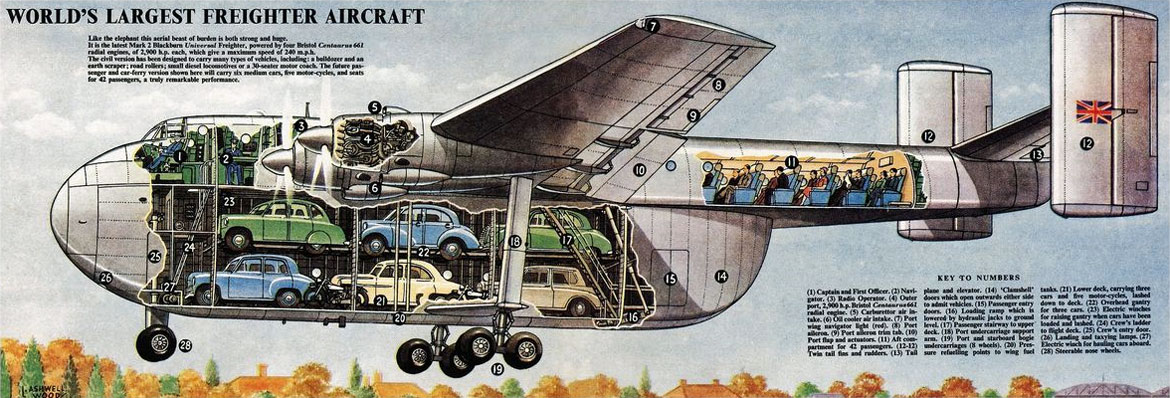
With thanks to Dougie Russell

From: Ian Berry, Eastleaze, Swindon, Wilts
Subject: Royal Connections
Hi Tony,
Over my career I met most of the Royals in one form or another. Initially as part of a Guard of Honour when I was a lowly SAC then many years later as a Warrant Officer introducing a group of Airmen to a Royal. Funnily these two occasions are linked as they were both Princess Margaret, the late Queen’s sister. She could be quite rude, sometimes going out of her way to be too! Prince Andrew certainly earns his reputation for arrogance and ignorance too. I met him when still serving in the Royal Navy and since.
Back to my theme, a well-kept confidentiality was the fact that the then HRH Prince Charles and his sister HRH Princess Anne would use RAF Lyneham quite often to fly in and out from for engagements. This being because both their homes at Highgrove House and Gatcombe Park were only 18 and 21 miles away. This practice carried on for many years until Lyneham closed. Princess Anne, later known as "Mrs Lawrence" to the DAMOs was a frequent visitor. Apart from Official engagements when she usually turned up in a Range Rover with her Close Protection Officer and Lady in Waiting. She was also the President of the Scottish Rugby Association; she retains that appointment to this day and whenever possible will attend any home games played at Murrayfield, Edinburgh. Of course she would fly out to other engagements too; usually though it involved an HS125 from 32 Squadron at RAF Northolt.
Subject: Royal Connections
Hi Tony,
Over my career I met most of the Royals in one form or another. Initially as part of a Guard of Honour when I was a lowly SAC then many years later as a Warrant Officer introducing a group of Airmen to a Royal. Funnily these two occasions are linked as they were both Princess Margaret, the late Queen’s sister. She could be quite rude, sometimes going out of her way to be too! Prince Andrew certainly earns his reputation for arrogance and ignorance too. I met him when still serving in the Royal Navy and since.
Back to my theme, a well-kept confidentiality was the fact that the then HRH Prince Charles and his sister HRH Princess Anne would use RAF Lyneham quite often to fly in and out from for engagements. This being because both their homes at Highgrove House and Gatcombe Park were only 18 and 21 miles away. This practice carried on for many years until Lyneham closed. Princess Anne, later known as "Mrs Lawrence" to the DAMOs was a frequent visitor. Apart from Official engagements when she usually turned up in a Range Rover with her Close Protection Officer and Lady in Waiting. She was also the President of the Scottish Rugby Association; she retains that appointment to this day and whenever possible will attend any home games played at Murrayfield, Edinburgh. Of course she would fly out to other engagements too; usually though it involved an HS125 from 32 Squadron at RAF Northolt.

An HS125 of 32 Squadron based at RAF Northolt
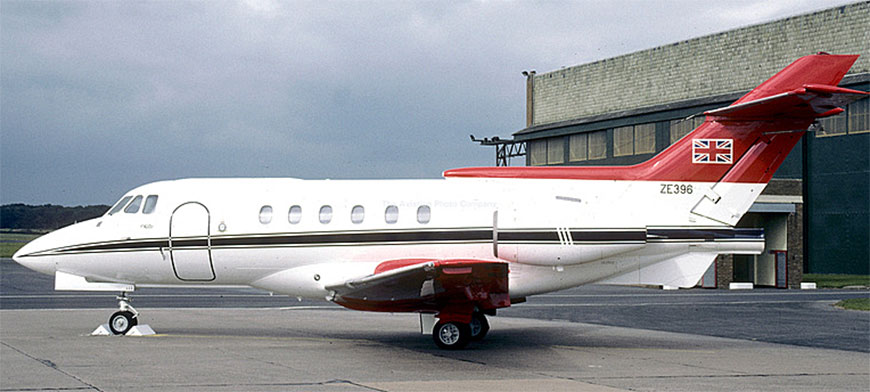
If it were only a day trip, she would self-drive herself and her Protection Officer in a Scimitar car, registration number 1420H. I only recently discovered this personalised number plate was given to her as a gift from the 14/20th Hussars. Incidentally the first Scimitar (she had several) was presented to her by the Queen for winning a medal at the Montreal Olympics.
The HS125 would always park outside the VIP Lounge of the Passenger Terminal. We would always get a 5mins warning from the main gate when she had entered the camp and would then await her arrival by the aircraft. She would then arrive in her car and park by the aircraft and as she was met by the Senior Officer of the Day. The Officer/WO DAMO would then drive her car to the nearby J5 Hangar to be stored inside until her return.
The HS125 would always park outside the VIP Lounge of the Passenger Terminal. We would always get a 5mins warning from the main gate when she had entered the camp and would then await her arrival by the aircraft. She would then arrive in her car and park by the aircraft and as she was met by the Senior Officer of the Day. The Officer/WO DAMO would then drive her car to the nearby J5 Hangar to be stored inside until her return.
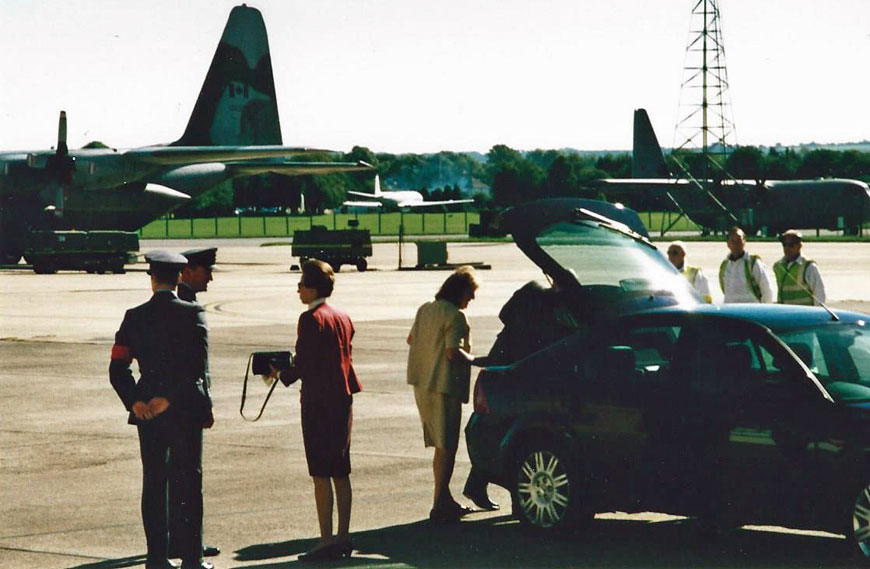
I took this photo through the DAMO's office window as NO photographs were allowed!
The brief always was that whomever drove the car must NEVER alter the seat or move the mirrors and so sometimes driving the vehicle was difficult. In all the years I had dealings with HRH she never smiled! Anyway, once quick pleasantries were over, she would depart in the HS125. On her return we would already have collected the car and would wait near the VIP Lounge for the aircraft to taxy and stop. Once chocked the DAMO would then drive close to the aircraft and vacate the vehicle, engine still running. He himself would then stand at attention near the VIP Lounge steps. A well-oiled procedure you would think? Sometime in the 90's I had a young Flt Lt DAMO with me called Andy Hulls. A pleasant chap and was over 6ft in height. This Saturday morning Andy had the privilege of driving the Scimitar. Sadly, he'd either forgotten his brief or ignored it and proceeded to move the seat and mirrors.
Later that evening, HRH arrived back from Edinburgh and Andy had collected the car and once the aircraft had stopped, he drove it to the aircraft and retired to the steps. I was watching the whole event through the windows of the DAMO’s Office which is next door to the VIP Lounge. HRH climbed into the car and closed the door and her Protection Officer did likewise. Next moment I saw the electric window open and a Royal hand appeared with the fingers summoning Andy. he walked to the car and then performed several bows and was visibly reddening. He'd just received the biggest rollocking of his life. Don't mess with Anne!
Later that evening, HRH arrived back from Edinburgh and Andy had collected the car and once the aircraft had stopped, he drove it to the aircraft and retired to the steps. I was watching the whole event through the windows of the DAMO’s Office which is next door to the VIP Lounge. HRH climbed into the car and closed the door and her Protection Officer did likewise. Next moment I saw the electric window open and a Royal hand appeared with the fingers summoning Andy. he walked to the car and then performed several bows and was visibly reddening. He'd just received the biggest rollocking of his life. Don't mess with Anne!
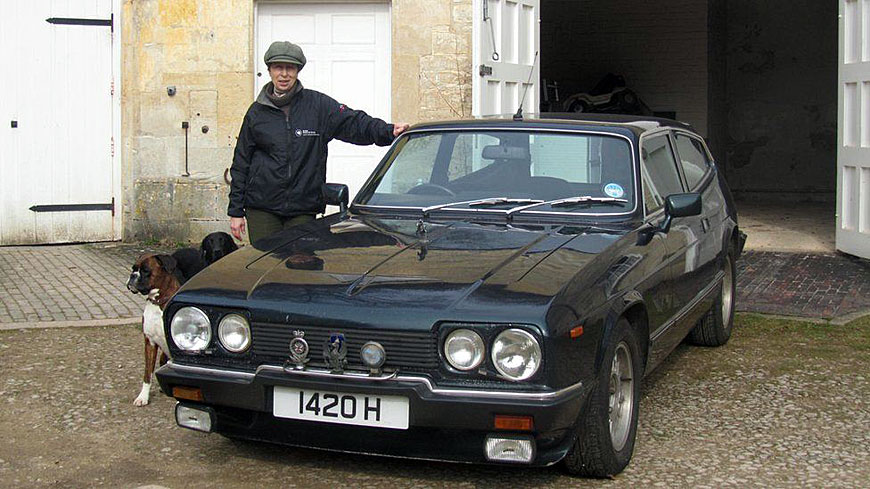
HRH with her beloved Scimitar, now in a Museum (the car, not the princess!).
As an aside, Princess Anne's daughter, Zara, married Mike Tindall, an ex-Rugby player. At a reception once, the late Duke of Edinburgh spoke to him and said that he was impressed that his future Mother-in-Law, Anne, liked him. "She's only interested if it eats hay or farts... You must eat a lot of hay?" he said.
Ian
Ian

Peacekeepers in Safe Hands
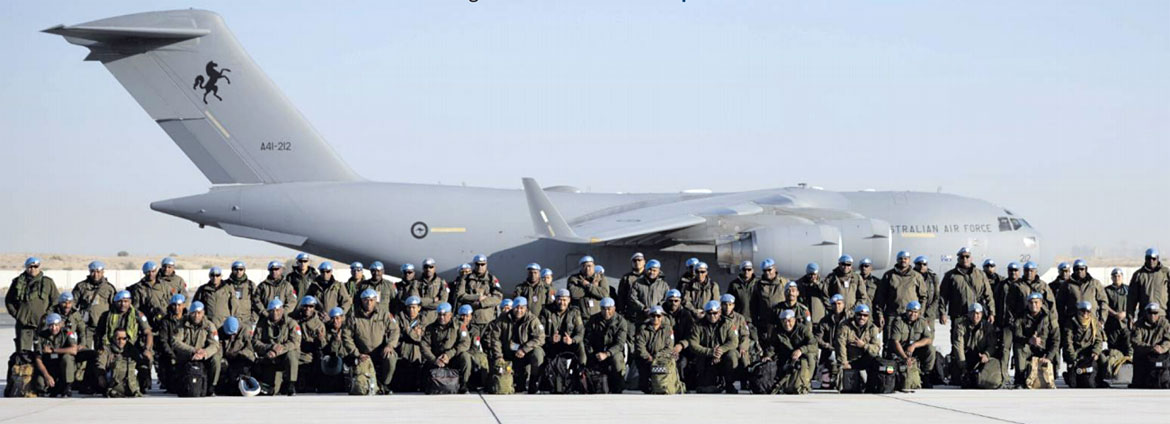
Inbound members of the Republic of Fiji Military Forces contribution to the UN assistance mission for Iraq
Under the Iraqi sun, boots hit the ground as a RAAF security team established a perimeter for an arriving rotation of Republic of Fiji Military Forces (RFMF) peacekeepers disembarking from a C-17A Globemaster III. Eighty-two personnel from the RFMF arrived to take on responsibilities for the United Nations Assistance Mission for Iraq — Rotation B (UNAMI-B). The passengers were offloaded and processed as the mobile air load team verified incoming cargo and boarded an outgoing RFMF element within four hours. Customs. checks, bag inspections and efficient handling were crucial, as any delays could have impacted the schedule.
The mission, which began in mid-January, involved 30 ADF personnel providing airlift support, travelling from Fiji to Perth via Diego Garcia and al-Minhad, then Iraq, and returning to Australia, within two weeks. According to pilot FLTLT Tom Breaden, the mission’s success stemmed from teamwork, preparation and training. “UNAML-B really pulls many facets of the Air Force together to make it happen,” he said, “We take extra precautions and follow special tactics, techniques and procedures when operating in high-risk areas like Iraq.”
For loadmaster CPL Maddy Hardy, the main challenge was coordinating last-minute changes under tight time constraints. “It all has to line up at the same time with serviceability of the aircraft. The cargo has to be ready as well as diplomatic clearances.” She said real-world implications make missions like peacekeeping more significant than routine exercises or training. “Broadly, we have a bit more survival training to assess the reason we're going in before we launch,” CPL Hardy said. “It’s about making sure maintenance, security, air movements and aircrew come together on the day to make the mission work.”
Rotations of RFMF soldiers provide security at locations such as Baghdad Airport, Camp Tamimi and the United Nations’ main working camp. They also guard entry and exit points while facilitating the safe movement of civilians and international personnel in a previously volatile region.
The mission, which began in mid-January, involved 30 ADF personnel providing airlift support, travelling from Fiji to Perth via Diego Garcia and al-Minhad, then Iraq, and returning to Australia, within two weeks. According to pilot FLTLT Tom Breaden, the mission’s success stemmed from teamwork, preparation and training. “UNAML-B really pulls many facets of the Air Force together to make it happen,” he said, “We take extra precautions and follow special tactics, techniques and procedures when operating in high-risk areas like Iraq.”
For loadmaster CPL Maddy Hardy, the main challenge was coordinating last-minute changes under tight time constraints. “It all has to line up at the same time with serviceability of the aircraft. The cargo has to be ready as well as diplomatic clearances.” She said real-world implications make missions like peacekeeping more significant than routine exercises or training. “Broadly, we have a bit more survival training to assess the reason we're going in before we launch,” CPL Hardy said. “It’s about making sure maintenance, security, air movements and aircrew come together on the day to make the mission work.”
Rotations of RFMF soldiers provide security at locations such as Baghdad Airport, Camp Tamimi and the United Nations’ main working camp. They also guard entry and exit points while facilitating the safe movement of civilians and international personnel in a previously volatile region.
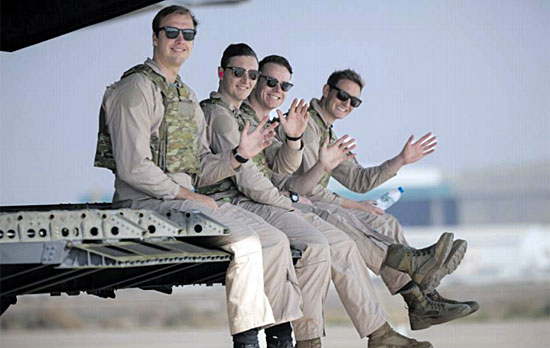
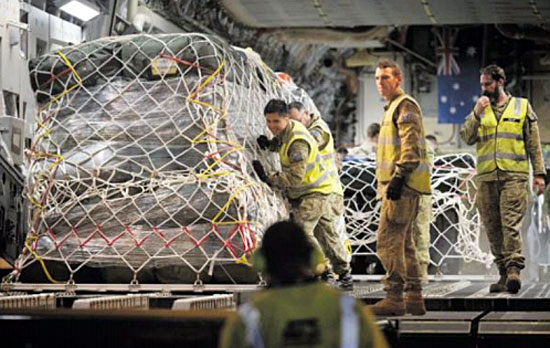
raafnews

From: Meirion (Taff) Jones, Barry, Glamorgan
Subject: Royal Connections
Dear Tony,
Here are my recollections of Royal connections.
Recovery from Exercise Crayon - On the 4th May 1968, a group of us were sauntering across the El Adem apron after our early morning Argosy flight out of the desert, when a shout went out, "Right you lot! Hide behind that building. Prince Phillip doesn't want to see your scruffy bodies!" Casting a few glances around the corner we saw the Prince wander across to his 32 Squadron Andover HS-748 and depart.
By the time we got to the transit billet all the showers were fully occupied so we had to wait our turn. We were due to depart on a Britannia flight to Lyneham that evening, then there was another call, "The first five out of this door can get on the VC10 to Brize Norton now!" And so it was that some hours later the five of us were invited by the DAMO at BZN to vacate the arrivals hall as we were spreading sand all over his shiny ceramic floor. And all this thanks to Prince Phillip. Three of us were from Odiham and we dined out on this story for a few days until we opened the Red Tops which showed graphic pictures from the deadly Argosy crash at Got-El-Afrag, which pulled us up short [see: https://ukmamsoba.org/crayon.html ].
Subject: Royal Connections
Dear Tony,
Here are my recollections of Royal connections.
Recovery from Exercise Crayon - On the 4th May 1968, a group of us were sauntering across the El Adem apron after our early morning Argosy flight out of the desert, when a shout went out, "Right you lot! Hide behind that building. Prince Phillip doesn't want to see your scruffy bodies!" Casting a few glances around the corner we saw the Prince wander across to his 32 Squadron Andover HS-748 and depart.
By the time we got to the transit billet all the showers were fully occupied so we had to wait our turn. We were due to depart on a Britannia flight to Lyneham that evening, then there was another call, "The first five out of this door can get on the VC10 to Brize Norton now!" And so it was that some hours later the five of us were invited by the DAMO at BZN to vacate the arrivals hall as we were spreading sand all over his shiny ceramic floor. And all this thanks to Prince Phillip. Three of us were from Odiham and we dined out on this story for a few days until we opened the Red Tops which showed graphic pictures from the deadly Argosy crash at Got-El-Afrag, which pulled us up short [see: https://ukmamsoba.org/crayon.html ].

Her Majesty at Brize Norton - At some stage in 1971/72, her majesty was due to visit and yours truly was volunteered for step party. Eventually on the morning word came through that the Royal flight 748 was on its way, when somebody casually enquired , did the Royal 748 have its own steps? Some phone calls later confirmed this and the step party were stood down and told to disappear. Having missed this opportunity to see the Queen I thought I would get a 2nd chance when she visited the NAAFI and I could observe her from my barrack block window. However I hadn't taken into account her short stature or the crowds that would gather so that all I saw was her green hat on the way in and on the way out of the building.
A close encounter on the road - By 1974 I was on MAMS A team. I can't remember the exact year but I was just leaving Lyneham for some home leave in my trusty MG Midget and was looking forward to the plunge down Shilton Dip.
Keeping well to the left in anticipation to the first right hand bend, I was confronted by a Rover SD1 coming the other way and well on my side of the road. The female driver was wrestling with the wheel trying to regain her side of the road, but she missed me by a whisker with her right hand wheels on my side of the white line.
Meandering down the hill in disbelief at the close call, I replayed the incident in my mind. The female driver was youngish with a beehive hair style and the gentleman next to her was showing some concern. The penny then dropped, the beehive belonged to Princess Anne and I had forgotten that she was due to fly out of Lyneham that morning. That was one narrow escape!
Regards,
Meirion (Taff ) Jones.
Keeping well to the left in anticipation to the first right hand bend, I was confronted by a Rover SD1 coming the other way and well on my side of the road. The female driver was wrestling with the wheel trying to regain her side of the road, but she missed me by a whisker with her right hand wheels on my side of the white line.
Meandering down the hill in disbelief at the close call, I replayed the incident in my mind. The female driver was youngish with a beehive hair style and the gentleman next to her was showing some concern. The penny then dropped, the beehive belonged to Princess Anne and I had forgotten that she was due to fly out of Lyneham that morning. That was one narrow escape!
Regards,
Meirion (Taff ) Jones.
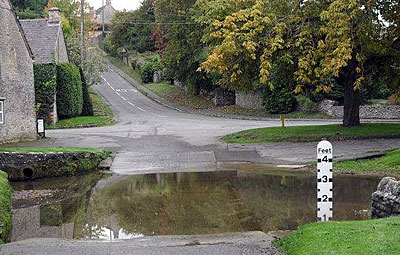
The ford at Shilton Dip

From: Norman Stamper, Torrevieja
Subject: RAF Hereford
Hi Tony,
I'm still going through my memorabilia files and boxes and came across the attached files. I know they are not Movements related but most of us were Suppliers before converting to our favorite trade of Movements. I thought this might bring back some memories of our early days when we started our lives in the RAF.
All the best
Norman
Subject: RAF Hereford
Hi Tony,
I'm still going through my memorabilia files and boxes and came across the attached files. I know they are not Movements related but most of us were Suppliers before converting to our favorite trade of Movements. I thought this might bring back some memories of our early days when we started our lives in the RAF.
All the best
Norman
RAF Hereford Boy Entrants' First Postings
(Click on the images to show full screen)
(Click on the images to show full screen)
302 Entry Postings Page 1
302 Entry Postings Page 2
303 Entry Postings Page 1
303 Entry Postings Page 2
304 Entry Postings Page 1
304 Entry Postings Page 2
305 Entry Postings Page 1
305 Entry Postings Page 2


First RNZAF C-130H Hercules aircraft retires to Air Force Museum
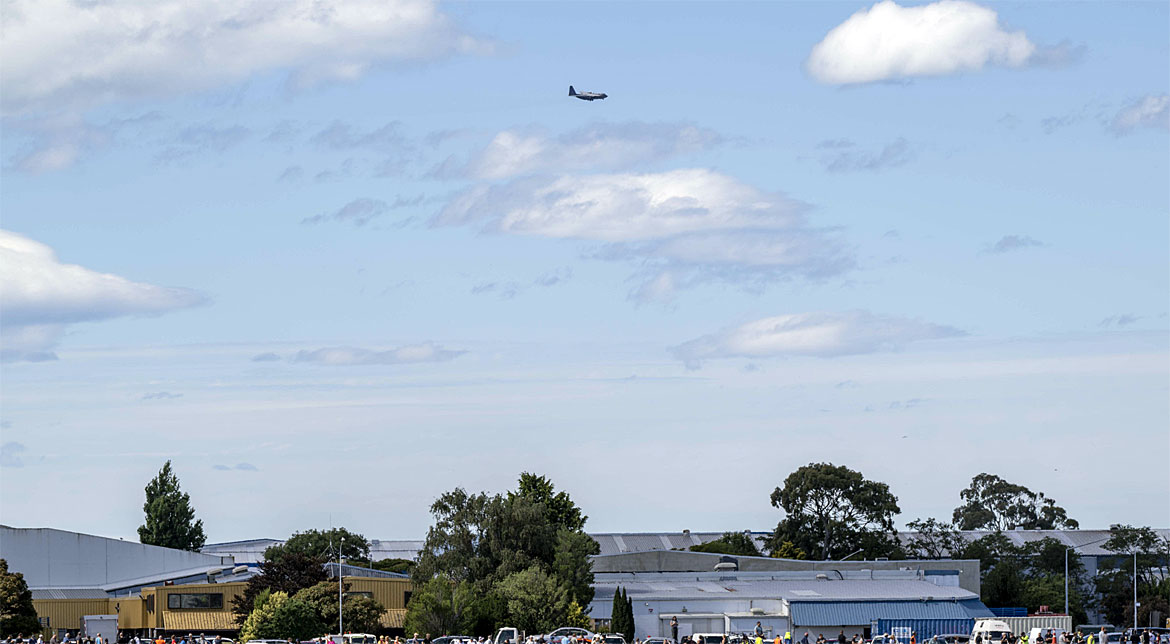
NZ7001 was the first of three C-130H Hercules aircraft to arrive at RNZAF Base Auckland, Whenuapai in 1965 and the fleet was quickly put to work transporting personnel from NZ Army 161 Battery and aid to Vietnam. That same year, a Hercules with personnel and supplies made its first flight to Antarctica. By 1969, the aircraft had proven so valuable in providing strategic and tactical airlift capabilities, a further two were purchased bringing the fleet to five.
Brett Marshall, Director of the Air Force Museum, says the arrival of the Hercules is a huge bonus for the museum and will be a popular visitor attraction in the region. “It has served New Zealand for 60 years and deserves to retire and to be conserved and displayed for the generations to come. NZ7001 is special as it was the first model of its kind to be exported by Lockheed and so we were the first customer,” he said.
The museum plans to expand its current footprint with a new exhibition hall large enough to house both the Hercules and the museum’s retired Lockheed P-3K2 Orion. “With a tail as high as a four-storey building and a wingspan of 40.5m, the aircraft is too large for the museum’s current spaces. The Orion is an equally significant aircraft, serving the RNZAF for 54 years before retiring to the museum in 2023,” he says.
In 2020, the Government announced the ageing fleet would be replaced by five new C-130J-30 Hercules. The last of the new aircraft arrived in December, allowing the C-130H to take a well-earned retirement.
A series of special open days are being planned so the public can view the Hercules before it goes into storage until its new permanent home is built. The remaining four aircraft in the fleet have been retired at RNZAF Base Woodbourne. It will be conserved before going on permanent display for New Zealanders to enjoy.
NZ7001 has earned a special place in New Zealand aviation history, serving the RNZAF at home and around the world, delivering troops, cargo and humanitarian aid for the past 60 years. The aircraft has clocked up more than 33,000 accident-free flying hours and 20,000 landings.
“It’s an incredible record considering some of the challenging and often inhospitable operating environments,” says Chief of Air Force, Air Vice-Marshal Darryn Webb. “This fleet has operated around the world from Europe to the South West Pacific, from Afghanistan to Antarctica. They are truly incredible machines that have done exactly what they were purchased for 60 years ago. This legacy of providing the support New Zealanders and our friends have needed over such a long period, safely and effectively, is a testament, not only to the aircraft design, but the professionalism and dedication of all of those who have worked on this aircraft.”
Air Vice-Marshal Webb said the Hercules had clocked up midwinter Antarctic rescues in minus 35 degree Celsius temperatures, many disaster-response missions across the Indo-Pacific, short-notice evacuation tasks, such as Kabul in 2021, and operated in many combat zones.
nzdf.mil.nz
Brett Marshall, Director of the Air Force Museum, says the arrival of the Hercules is a huge bonus for the museum and will be a popular visitor attraction in the region. “It has served New Zealand for 60 years and deserves to retire and to be conserved and displayed for the generations to come. NZ7001 is special as it was the first model of its kind to be exported by Lockheed and so we were the first customer,” he said.
The museum plans to expand its current footprint with a new exhibition hall large enough to house both the Hercules and the museum’s retired Lockheed P-3K2 Orion. “With a tail as high as a four-storey building and a wingspan of 40.5m, the aircraft is too large for the museum’s current spaces. The Orion is an equally significant aircraft, serving the RNZAF for 54 years before retiring to the museum in 2023,” he says.
In 2020, the Government announced the ageing fleet would be replaced by five new C-130J-30 Hercules. The last of the new aircraft arrived in December, allowing the C-130H to take a well-earned retirement.
A series of special open days are being planned so the public can view the Hercules before it goes into storage until its new permanent home is built. The remaining four aircraft in the fleet have been retired at RNZAF Base Woodbourne. It will be conserved before going on permanent display for New Zealanders to enjoy.
NZ7001 has earned a special place in New Zealand aviation history, serving the RNZAF at home and around the world, delivering troops, cargo and humanitarian aid for the past 60 years. The aircraft has clocked up more than 33,000 accident-free flying hours and 20,000 landings.
“It’s an incredible record considering some of the challenging and often inhospitable operating environments,” says Chief of Air Force, Air Vice-Marshal Darryn Webb. “This fleet has operated around the world from Europe to the South West Pacific, from Afghanistan to Antarctica. They are truly incredible machines that have done exactly what they were purchased for 60 years ago. This legacy of providing the support New Zealanders and our friends have needed over such a long period, safely and effectively, is a testament, not only to the aircraft design, but the professionalism and dedication of all of those who have worked on this aircraft.”
Air Vice-Marshal Webb said the Hercules had clocked up midwinter Antarctic rescues in minus 35 degree Celsius temperatures, many disaster-response missions across the Indo-Pacific, short-notice evacuation tasks, such as Kabul in 2021, and operated in many combat zones.
nzdf.mil.nz

From: Stephen Davey, Tadcaster, North Yorks
Subject: Royal Connections
Hello Tony,
Please see attached photo of A Shift traffic team, RAF Brize Norton, circa 1972/1973, the Queen visited the Station and we were to represent a loading team. I am 5th from the left. To the right of the photo and out of shot is a Belfast from 53 Sqn with two armoured personnel carriers on board which we were supposed to have just loaded (!?), whereas in fact they had been driven on hours before.
Subject: Royal Connections
Hello Tony,
Please see attached photo of A Shift traffic team, RAF Brize Norton, circa 1972/1973, the Queen visited the Station and we were to represent a loading team. I am 5th from the left. To the right of the photo and out of shot is a Belfast from 53 Sqn with two armoured personnel carriers on board which we were supposed to have just loaded (!?), whereas in fact they had been driven on hours before.

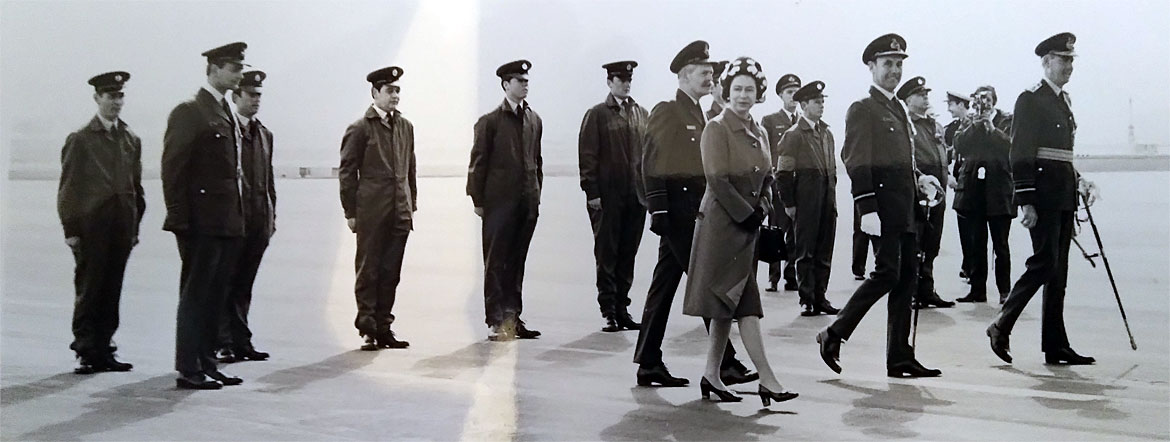
In the photo from the left, Brian Kingston, Tony King (DAMO), Geordie Flanagan, Taff Phillips, myself and then Hugh Davey (no relation). The upshot of this was I received a new No 1 uniform and a new pair of overalls. Happy days!
Cheers,
Steve Davey
Cheers,
Steve Davey
From: Steve Caunt, Shepton Mallet, Somerset
Subject: Royal Connections
Hi Tony,
I’ll come to my ’Royal Story’ in a moment but your teaser story reminded me of something else…
Francis Chan transferred to the RAF Airport Unit at Kai Tak Airport when RAF Kai Tak closed and was a most amiable and knowledgeable clerk in my time there (79-81) – sipping his lidded mug of jasmine tea throughout the day as we came and went and managing all the paperwork with his inimitable quiet and methodical efficiency. I noticed one day that the main office looked increasingly cramped with filing cabinets and, pulling open drawers at random, politely asked Francis why we were keeping long-closed files from 19canteen. With a weary shrug Francis replied that the information in the files might come in useful one day. With typical youthful arrogance I took a glance at several yellowing files and demanded that they be destroyed asap iaw the regulations. Francis duly complied.
Fast forward 12 months and we were advised of the VC and GC reunion in London with the distinguished medal holders from the Far East and Australia/New Zealand being assembled in Hong Kong before being flown to London by the RAF. The Boss said surely this must have been done before and we must have some record of how it was organised. At this point, Francis looked at me with a broad grin and said ‘Steve…you remember those files...?" We remained in touch after my tour ended and Francis helped me to expand my collection of Hong Kong Post Office First Day covers for many years afterwards. He was one of the best and most loyal of Chinese staff that I had the pleasure to work with.
Subject: Royal Connections
Hi Tony,
I’ll come to my ’Royal Story’ in a moment but your teaser story reminded me of something else…
Francis Chan transferred to the RAF Airport Unit at Kai Tak Airport when RAF Kai Tak closed and was a most amiable and knowledgeable clerk in my time there (79-81) – sipping his lidded mug of jasmine tea throughout the day as we came and went and managing all the paperwork with his inimitable quiet and methodical efficiency. I noticed one day that the main office looked increasingly cramped with filing cabinets and, pulling open drawers at random, politely asked Francis why we were keeping long-closed files from 19canteen. With a weary shrug Francis replied that the information in the files might come in useful one day. With typical youthful arrogance I took a glance at several yellowing files and demanded that they be destroyed asap iaw the regulations. Francis duly complied.
Fast forward 12 months and we were advised of the VC and GC reunion in London with the distinguished medal holders from the Far East and Australia/New Zealand being assembled in Hong Kong before being flown to London by the RAF. The Boss said surely this must have been done before and we must have some record of how it was organised. At this point, Francis looked at me with a broad grin and said ‘Steve…you remember those files...?" We remained in touch after my tour ended and Francis helped me to expand my collection of Hong Kong Post Office First Day covers for many years afterwards. He was one of the best and most loyal of Chinese staff that I had the pleasure to work with.

The enclosed picture shows me and a youthful Prince Charles at RAF Northolt on a dark and misty evening in 1976/7.
We had been notified of a Queen's Flight helicopter being diverted to Northolt at about 20 minutes notice as fog had prevented the aircraft from landing in Central London. We were told that the Prince had an important engagement in London and that a car was to be provided for the journey from Northolt – and you can see a rather startled looking MT Sergeant in the photo alongside your truly who had just about enough time to dust the car and don his No.1's for the task!
As the helicopter came into land there was no sign of the Station Commander or any other Station exec and it fell to Pilot Officer me to greet the Prince and escort him to the car where we were met by a very breathless Station Commander making his apologies and desperately hoping that the DAMO hadn’t dropped him in it! A grateful Prince of Wales settled into the car and sped off to the A40...
Best wishes,
Steve Caunt
We had been notified of a Queen's Flight helicopter being diverted to Northolt at about 20 minutes notice as fog had prevented the aircraft from landing in Central London. We were told that the Prince had an important engagement in London and that a car was to be provided for the journey from Northolt – and you can see a rather startled looking MT Sergeant in the photo alongside your truly who had just about enough time to dust the car and don his No.1's for the task!
As the helicopter came into land there was no sign of the Station Commander or any other Station exec and it fell to Pilot Officer me to greet the Prince and escort him to the car where we were met by a very breathless Station Commander making his apologies and desperately hoping that the DAMO hadn’t dropped him in it! A grateful Prince of Wales settled into the car and sped off to the A40...
Best wishes,
Steve Caunt
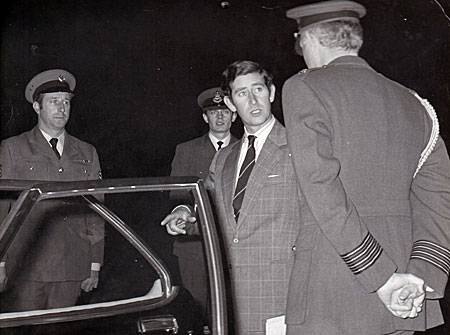

From: Howard Firth, South Scarle, Notts
Subject: Royal Connections
Hi Tony,
Subject: Royal Connections
Hi Tony,

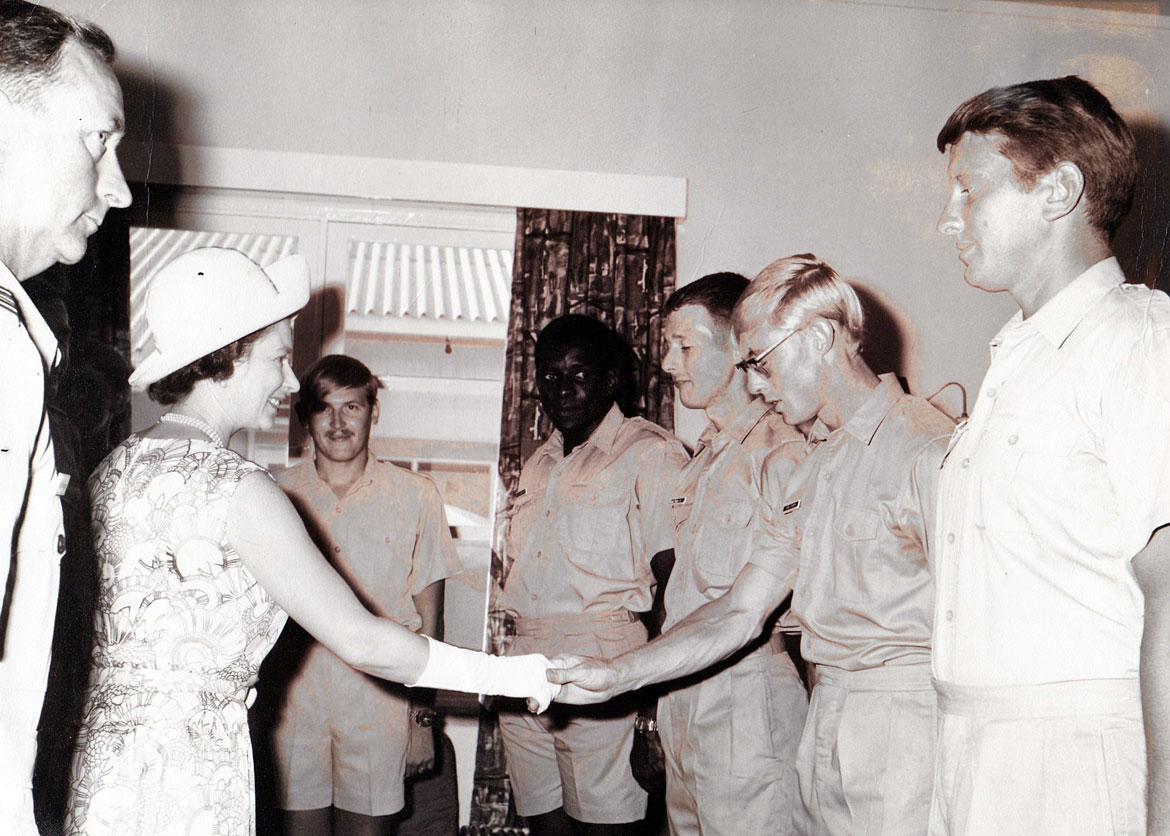
The attached pic relates to a Royal Visit to RAF Gan and the Seychelles in 1972. The visit started with the impressive sight of the arrival, through the Willingili gap, of the Royal Yacht Britannia. Even more impressive was, as the evening progressed, the ship's lights making a wonderful backdrop to our tropical home.
The following day, selected personnel were formed up in the Blue Lagoon transit lounge to meet Her Majesty. The pic records the moment that Corporal "H" Firth, flanked by fellow Movers Glyn Jones and Ken Morris, met HRH Queen Elizabeth II. The next morning, a half team of movers, myself included, loaded up a Bristol Britannia with all the Royal Household baggage for the flight to the Seychelles. After we had landed and offloaded the aircraft, we taxied out for take off, but then returned to the pan for a technical snag to be fixed. Hopes of a night stop were high but the GE fixed the fault and we were on our way back to our tropical home.
Good memories; Gan was such a marvellous posting.
Regards
H
The following day, selected personnel were formed up in the Blue Lagoon transit lounge to meet Her Majesty. The pic records the moment that Corporal "H" Firth, flanked by fellow Movers Glyn Jones and Ken Morris, met HRH Queen Elizabeth II. The next morning, a half team of movers, myself included, loaded up a Bristol Britannia with all the Royal Household baggage for the flight to the Seychelles. After we had landed and offloaded the aircraft, we taxied out for take off, but then returned to the pan for a technical snag to be fixed. Hopes of a night stop were high but the GE fixed the fault and we were on our way back to our tropical home.
Good memories; Gan was such a marvellous posting.
Regards
H

A new member joining us recently is:
Joe Joseph, Glastonbury, Somerset
Welcome to the OBA!

A Royal Air Force A400M transport aircraft from the Malvinas Islands made a stopover in Chile
Yesterday, Thursday, February 13, a Royal Air Force (RAF) Airbus A400M Atlas military transport aircraft landed in Punta Arenas, Chile. The aircraft, registered as ZM421, took off in the morning from Mount Pleasant Air Base, located on Soledad Island, Islas Malvinas [Falklands], without any official statement regarding the purpose of its flight.
According to flight tracking platforms, the A400M avoided Argentine airspace along its route. It is worth noting that the Argentine Air Force operates an INVAP RPA-170M radar in Cabo Santo Domingo, Río Grande, with a range of 315 km, which may have influenced the aircraft’s flight path.
Users on the social network X reported the arrival of the A400M at Chabunco Air Base in Punta Arenas. However, there have been no official statements from the RAF or the UK Ministry of Defence regarding the aircraft’s operation in the region.
Recently, the aircraft reportedly departed, possibly heading towards Antarctica, presumably en route to Rothera Research Station, located on Adelaide Island on the western side of the Antarctic Peninsula.
zona-militar.com
According to flight tracking platforms, the A400M avoided Argentine airspace along its route. It is worth noting that the Argentine Air Force operates an INVAP RPA-170M radar in Cabo Santo Domingo, Río Grande, with a range of 315 km, which may have influenced the aircraft’s flight path.
Users on the social network X reported the arrival of the A400M at Chabunco Air Base in Punta Arenas. However, there have been no official statements from the RAF or the UK Ministry of Defence regarding the aircraft’s operation in the region.
Recently, the aircraft reportedly departed, possibly heading towards Antarctica, presumably en route to Rothera Research Station, located on Adelaide Island on the western side of the Antarctic Peninsula.
zona-militar.com
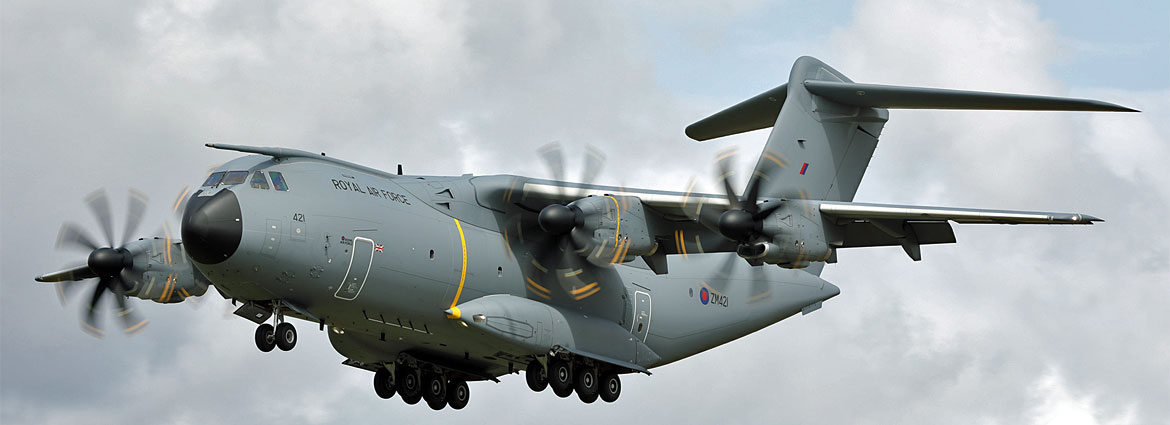

From: Jerry Allen, Cheltenham, Glos
Subject: Ages of Aviation
Dear Tony,
While not following one of your newsletter themes, I thought this might be of interest.
This week I was fortunate to be able to visit one of the world leaders in hydrogen fuelled propulsion for aviation. ZeroAvia (https://zeroavia.com/) is a US/UK venture with one of its primary development and flight testing sites at RAF Kemble (actually, I should say ‘Cotswold Airport’ but old habits die hard).
It was a super visit, hosted by an ex-33 Squadron Puma pilot who is now global head of safety for the programme. I was amazed at the innovation, investment, and potential with several big players committing to fly commercial hydrogen powered aircraft this decade. We will see.
Perhaps the most poignant moment came when I realised that the flying test-bed Dornier (pictured, the 5-blade prop is the hydrogen engine) shares a hangar with a flying de Havilland Vampire representing what was cutting edge technology with what is surely to come. The icing on the visit cake was the RAF Transport Command Britannia that (purely coincidentally) acts as a gate guardian to ZeroAvia. Great day.
Jerry
Subject: Ages of Aviation
Dear Tony,
While not following one of your newsletter themes, I thought this might be of interest.
This week I was fortunate to be able to visit one of the world leaders in hydrogen fuelled propulsion for aviation. ZeroAvia (https://zeroavia.com/) is a US/UK venture with one of its primary development and flight testing sites at RAF Kemble (actually, I should say ‘Cotswold Airport’ but old habits die hard).
It was a super visit, hosted by an ex-33 Squadron Puma pilot who is now global head of safety for the programme. I was amazed at the innovation, investment, and potential with several big players committing to fly commercial hydrogen powered aircraft this decade. We will see.
Perhaps the most poignant moment came when I realised that the flying test-bed Dornier (pictured, the 5-blade prop is the hydrogen engine) shares a hangar with a flying de Havilland Vampire representing what was cutting edge technology with what is surely to come. The icing on the visit cake was the RAF Transport Command Britannia that (purely coincidentally) acts as a gate guardian to ZeroAvia. Great day.
Jerry

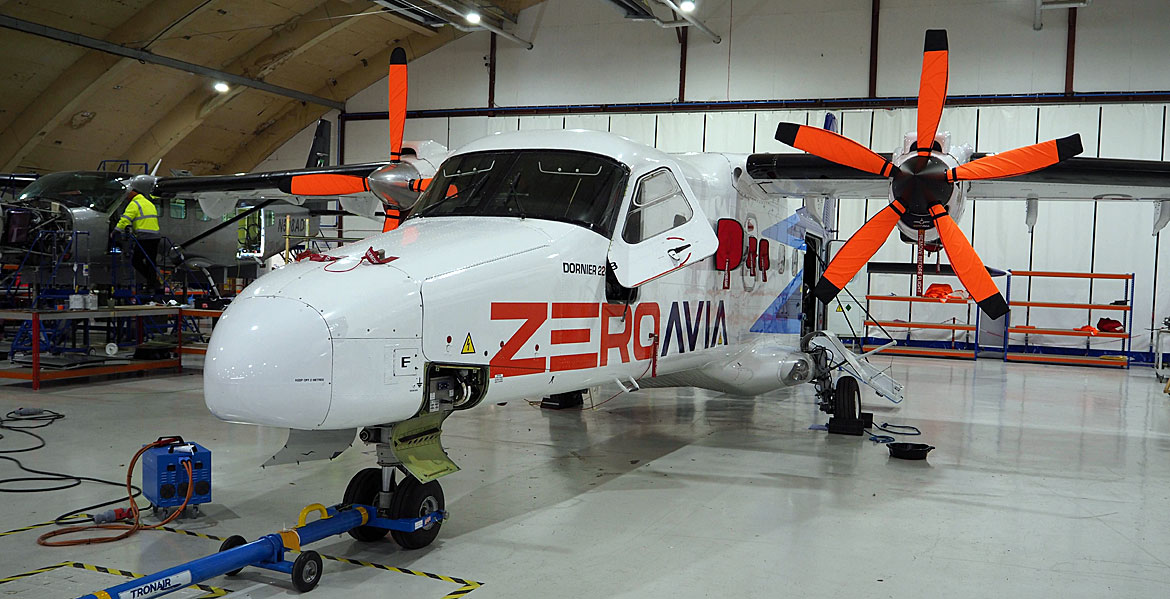

Why do the British salute differently to the Americans?

From: Allan Mitchley, Rhyl, Denbighshire
Subject: Royal Connections – plus!
Dear Tony,
In 1982, I was at Brize Norton Air Movements throughout the Falkland's conflict. HRH Prince Charles (Colonel in Chief of the Para's), came to Brize Norton to meet an inbound flight from Mount Pleasant which had army troops returning to the UK; myself and Eddie McDowall were sent out to the front a/c steps and told to direct the troops towards Prince Charles as he wished to thank them personally for their efforts.
Last year I had the honour of meeting two of the army veterans who were on that flight when I laid a wreath on behalf of Rhyl RAFA on Remembrance Day (shhhhh, they have special berets on!).
Yours, Allan
Subject: Royal Connections – plus!
Dear Tony,
In 1982, I was at Brize Norton Air Movements throughout the Falkland's conflict. HRH Prince Charles (Colonel in Chief of the Para's), came to Brize Norton to meet an inbound flight from Mount Pleasant which had army troops returning to the UK; myself and Eddie McDowall were sent out to the front a/c steps and told to direct the troops towards Prince Charles as he wished to thank them personally for their efforts.
Last year I had the honour of meeting two of the army veterans who were on that flight when I laid a wreath on behalf of Rhyl RAFA on Remembrance Day (shhhhh, they have special berets on!).
Yours, Allan

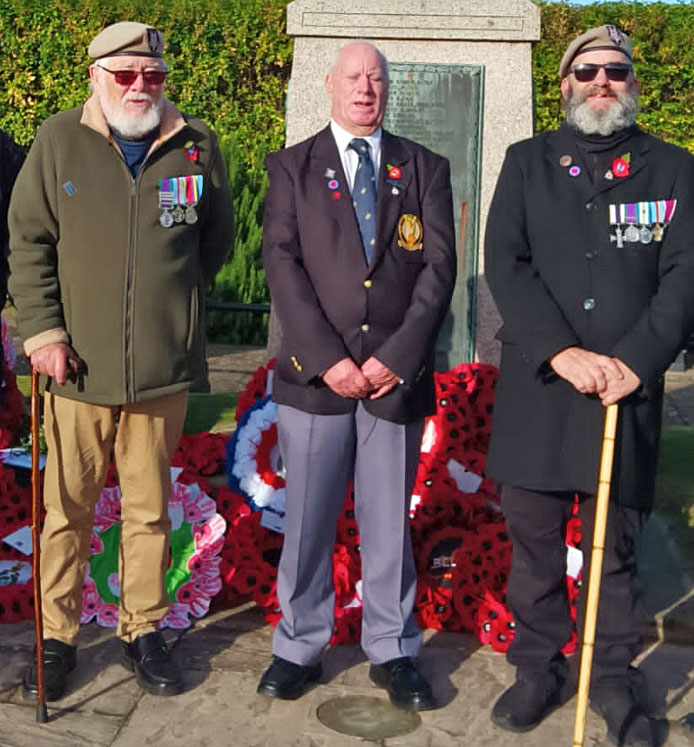
Australia’s C-27J keeps military credentials amid humanitarian focus
The Leonardo C-27J tactical transport has become a key asset for the Royal Australian Air Force (RAAF) to provide humanitarian assistance domestically and to regional neighbours, as it also continues to perform key military roles.
The RAAF’s 10 C-27Js serve with 35 Sqn, which is more popularly known as ‘Wallaby Airlines’. The Australian marsupial features on the unit’s badge.
The RAAF’s 10 C-27Js serve with 35 Sqn, which is more popularly known as ‘Wallaby Airlines’. The Australian marsupial features on the unit’s badge.
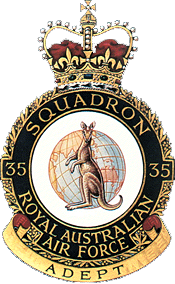
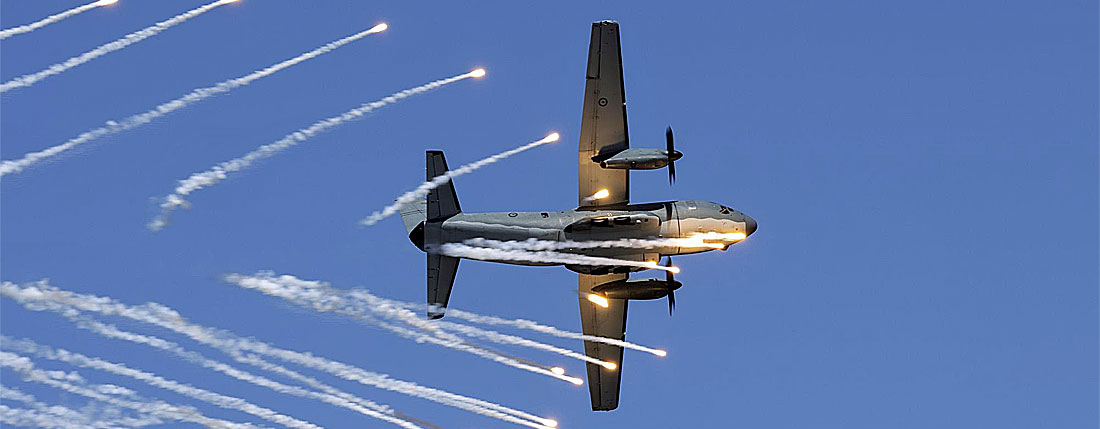
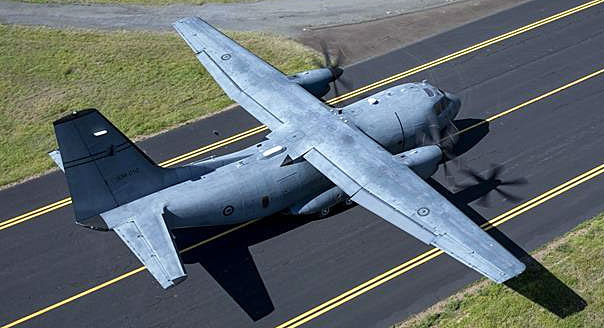
The squadron has a strong heritage in military logistics, tracing its origins to the Second World War, when it flew Douglas C-47 Dakotas. It was retired in 1946 but was reborn as an operator of the De Havilland Canada DHC-4 Caribou in 1966, when 35 Sqn saw service in the Vietnam War.
The unit was again retired in 2000 but was reactivated in 2013 to operate the C-27J, which had prevailed in a competition against the Airbus Defence & Space C295 as a Caribou replacement.
As part of its C-27J sales campaign, the then-Alenia – using an Italian air force example – demonstrated the aircraft at the 2011 Avalon air show. The aircraft showed off its ability to descend sharply and stop in a very short distance. Even more impressive were its barrel rolls and loops: manoeuvres more commonly associated with fighters.
The unit was again retired in 2000 but was reactivated in 2013 to operate the C-27J, which had prevailed in a competition against the Airbus Defence & Space C295 as a Caribou replacement.
As part of its C-27J sales campaign, the then-Alenia – using an Italian air force example – demonstrated the aircraft at the 2011 Avalon air show. The aircraft showed off its ability to descend sharply and stop in a very short distance. Even more impressive were its barrel rolls and loops: manoeuvres more commonly associated with fighters.
Wing Commander Mark Seery is commanding officer of 35 Sqn. He is well aware of the C-27’s power and manoeuvrability, but stresses that the squadron does not perform aerobatics – even though the type will appear at this year’s Avalon air show, from 25-30 March. “No loops and rolls from us,” says Seery. “We just want to get these aircraft out into the late 2030s.”
The Australian Department of Defence (DoD) originally cast the twin-engined type as a “battlefield airlifter”, but in July 2021 Canberra redefined the C-27J’s mission to focus on humanitarian and disaster relief (HADR) in Australia and the surrounding region. The battlefield airlifter label was dropped in favour of “light tactical airlift”.
In Seery’s view, the 2021 redefinition was more about changing the priorities around C-27J activities, such as how funding is used and where effort is placed. “All capabilities, as we go through the life of them, we look at the strategic environment that we’re operating in at the time, and we pivot to where we can utilise the platform best, now that we know more about [the C-27J],” he says. “We didn’t necessarily stop doing anything, and we didn’t necessarily remove anything, but it was more about where we needed to pivot and focus.” Seery contends that the C-27J’s flexibility and nimbleness are key attributes both for HADR and military work. The type’s manoeuvrability is crucial when getting into and out of tight airfields.
Training for the C-27J has remained much the same, as has integrating core skills into the squadron’s aviators. Despite the ostensible HADR focus, C-27J crews can use all aircraft systems, including self-protection equipment, and they know how to operate in threat environments.
The Australian Department of Defence (DoD) originally cast the twin-engined type as a “battlefield airlifter”, but in July 2021 Canberra redefined the C-27J’s mission to focus on humanitarian and disaster relief (HADR) in Australia and the surrounding region. The battlefield airlifter label was dropped in favour of “light tactical airlift”.
In Seery’s view, the 2021 redefinition was more about changing the priorities around C-27J activities, such as how funding is used and where effort is placed. “All capabilities, as we go through the life of them, we look at the strategic environment that we’re operating in at the time, and we pivot to where we can utilise the platform best, now that we know more about [the C-27J],” he says. “We didn’t necessarily stop doing anything, and we didn’t necessarily remove anything, but it was more about where we needed to pivot and focus.” Seery contends that the C-27J’s flexibility and nimbleness are key attributes both for HADR and military work. The type’s manoeuvrability is crucial when getting into and out of tight airfields.
Training for the C-27J has remained much the same, as has integrating core skills into the squadron’s aviators. Despite the ostensible HADR focus, C-27J crews can use all aircraft systems, including self-protection equipment, and they know how to operate in threat environments.
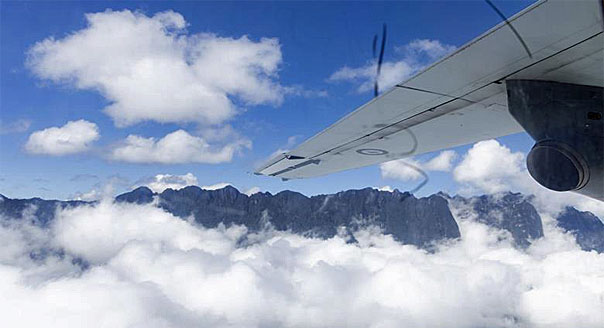
The C-27J’s credentials as a military aircraft are not in dispute. Mission sets include air dropping cargo and paratroopers, cargo carriage, as well as medical evacuation. The aircraft has made appearances at defence exercises in Southeast Asia and in the US territory of Guam.
According to the RAAF’s website, the C-27J has capacity for 34 passengers, 21 stretcher patients, or 5t of cargo. Seery says that the number of passengers could be stretched in an emergency.
He notes that a key benefit of the C-27J is its cargo handling system, which allows it to carry pallets that are compatible with other aircraft types. The type can also carry vehicles, which can be loaded and unloaded via the aircraft’s ramp.
According to the RAAF’s website, the C-27J has capacity for 34 passengers, 21 stretcher patients, or 5t of cargo. Seery says that the number of passengers could be stretched in an emergency.
He notes that a key benefit of the C-27J is its cargo handling system, which allows it to carry pallets that are compatible with other aircraft types. The type can also carry vehicles, which can be loaded and unloaded via the aircraft’s ramp.
The C-27J has significant commonality with the four-engined Lockheed Martin C-130J tactical transport, the workhorse of the RAAF. The two types share a high degree of cockpit and avionics commonality, as the C-27J was developed under the Lockheed Martin Alenia Tactical Transport Systems partnership. Seery notes that the cockpit commonality between the two fleets has started to diverge, especially following a hardware and software upgrade of the RAAF’s C-130Js. “Their cockpit systems are slightly starting to diverge a little bit from what we have,” says Seery. “Later in life, we’ll probably do something similar when we’ll do a mid-life upgrade as well.”
Still, things such as head-up display symbology, flight procedures, and general cockpit philosophies remain broadly the same. “If I have a pilot who comes across from 37 Sqn, which operates the C-130J, it’s a really quick conversion for them onto our aircraft type. Equally, if we send some of our pilots across to them, it’s also a relatively quick, easy conversion onto their type.” The two types are also powered by the same turboprop engine, the Rolls-Royce AE2100. This sort of commonality is especially helpful for a small air force such as the RAAF, says Seery.
From their base at RAAF Amberley, located south of Brisbane, Queensland, the aircraft are regularly deployed inside Australia. The type has become a stalwart for humanitarian missions.
When announcing its redefinition of the C-27J’s mission in 2021, the DoD made much of the type’s utility during Australia’s 2019/2020 bushfire crisis. During Operation Bushfire Assist, the Australian Defence Force’s (ADF’s) response to the disaster, C-27Js evacuated 2,400 people from fire-affected communities and moved 300,000kg (661,000lb) of cargo. Critically, the C-27J was able to reach locations that were inaccessible for other Australian operated types, such as the C-130J and Boeing CH-47 Chinook transport helicopter. Seery says that three C-27Js were deployed for the effort. For a while bushfires cut off the small coastal town of Mallacoota.
Still, things such as head-up display symbology, flight procedures, and general cockpit philosophies remain broadly the same. “If I have a pilot who comes across from 37 Sqn, which operates the C-130J, it’s a really quick conversion for them onto our aircraft type. Equally, if we send some of our pilots across to them, it’s also a relatively quick, easy conversion onto their type.” The two types are also powered by the same turboprop engine, the Rolls-Royce AE2100. This sort of commonality is especially helpful for a small air force such as the RAAF, says Seery.
From their base at RAAF Amberley, located south of Brisbane, Queensland, the aircraft are regularly deployed inside Australia. The type has become a stalwart for humanitarian missions.
When announcing its redefinition of the C-27J’s mission in 2021, the DoD made much of the type’s utility during Australia’s 2019/2020 bushfire crisis. During Operation Bushfire Assist, the Australian Defence Force’s (ADF’s) response to the disaster, C-27Js evacuated 2,400 people from fire-affected communities and moved 300,000kg (661,000lb) of cargo. Critically, the C-27J was able to reach locations that were inaccessible for other Australian operated types, such as the C-130J and Boeing CH-47 Chinook transport helicopter. Seery says that three C-27Js were deployed for the effort. For a while bushfires cut off the small coastal town of Mallacoota.
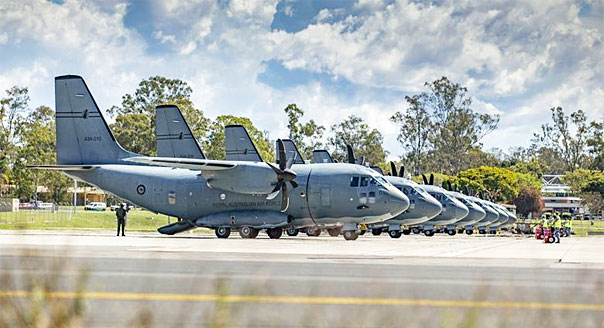
In addition to being challenging to get into and out of, the town’s runway was too short and “soft” to handle larger aircraft, but the light footprint of the C-27J allowed it to form an air bridge. Over a one-week period, 35 Sqn’s C-27Js evacuated about 1,000 people from Mallacoota. Animals were also evacuated. It also delivered essential supplies such as food, water, medicine, and other necessities. “Of all the strengths the C-27J brings, it’s got a light footprint, and you can land and take off on relatively soft runways where heavier aircraft, such as the C-130 and Chinook at times, will have a challenge. They might damage those strips as they come in and out.”
In addition to the type’s usefulness as a domestic HADR asset, a C-27J is regularly deployed overseas in Haiti or Papua New Guinea (PNG) under the Defence Pacific Air Programme. The programme has been running since 2023 and sees the RAAF integrate the C-27J capability with the New Guinea Defence Force’s three PAC P-750 aircraft, of which Canberra furnished two examples to Port Moresby in 2023.
In addition to the type’s usefulness as a domestic HADR asset, a C-27J is regularly deployed overseas in Haiti or Papua New Guinea (PNG) under the Defence Pacific Air Programme. The programme has been running since 2023 and sees the RAAF integrate the C-27J capability with the New Guinea Defence Force’s three PAC P-750 aircraft, of which Canberra furnished two examples to Port Moresby in 2023.
The RAAF operates 10 C27J's
The C-27J was a key part of Australia’s response to a devastating landslide that occurred in the PNG’s highland province of Enga in May 2024. Casualties were likely in excess of 1,000 people and 7,850 were affected by the disaster. The landslide also cut power lines and made clean water inaccessible.
Among other efforts, Canberra dispatched two Boeing C-17 supply flights from Brisbane to Port Moresby. RAAF C-27Js and C-130Js then ferried supplies and personnel to Wapenamanda airport, which sits at an elevation of 5,889ft and has a single 1,540m (5,050ft)-long runway. “It’s a relatively short airfield that sits at high density altitude,” says Seery. “It is quite high up in the mountain ranges and has lots of challenging approaches to get in and out of there.” Visual flight rules are the only way in and out. Pilots on approach often needed to fly underneath clouds and manoeuvre up a valley before landing. “This showed the diversity and utility of the aircraft in that the airfield itself was quite a challenging strip to get in and out of. Mountain operations is something we qualify our crews in as well.”
Thanks to its relatively small size, the aircraft can manoeuvre around small airfields. Critically, it has the capability to reverse. Seery says that in a narrow space, the aircraft can perform the equivalent of a three- or six -point turn to reverse its direction. One challenge facing the global C-27J fleet is its relatively small size. According to Cirium, an aviation analytics company, just 87 examples are in service globally, divided among 16 operators. With its 10 examples, the RAAF is the third largest operator, after the US Coast Guard (14) and the Italian air force (12).
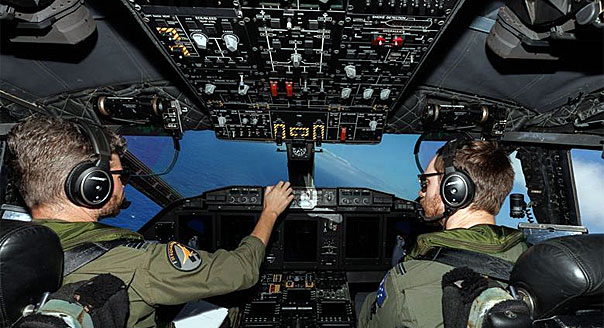
Asked about aircraft availability, Seery says that this is “quite good”, noting that Northrop Grumman Australia provides base maintenance for the fleet.
He adds that the RAAF learned a considerable amount about the C-27J during its original certification effort and that this offers a strong understanding of how to manage the fleet.
While the small size of the fleet can be a challenge, the Australian C-27J team works closely with US and Italian counterparts.
“We communicate regularly, stay across each other’s problems, so that when we do need support from the OEM, whether it’s spares difficulties, whether it’s engineering solutions or problems, we work those problems collaboratively and ensure that we’re all trying to prioritise them together.”
He adds that the RAAF learned a considerable amount about the C-27J during its original certification effort and that this offers a strong understanding of how to manage the fleet.
While the small size of the fleet can be a challenge, the Australian C-27J team works closely with US and Italian counterparts.
“We communicate regularly, stay across each other’s problems, so that when we do need support from the OEM, whether it’s spares difficulties, whether it’s engineering solutions or problems, we work those problems collaboratively and ensure that we’re all trying to prioritise them together.”
Logically, the C-27J should have a place in the Agile Combat Employment (ACE) strategy that has been adopted by the US Air Force and the RAAF. Under ACE, USAF, RAAF and allied combat aircraft complicate the targeting dilemma for adversaries by operating unpredictably from diverse airfields.
The ACE concept of operations places great emphasis on the timely transport of fuel, munitions, and personnel to sometimes austere locations.
Seery does not touch on the C-27J’s specific role in ACE scenarios, but observes that both the ADF and RAAF are very focused on ACE. He feels that the pilot skills and aircraft attributes that allow the C-27J to operate into difficult airfields during peacetime would be highly relevant during a conflict.
“Broadly speaking, the C-27J is a military aircraft, and it can and will be utilised in military circumstances, including in times of conflict.”
Topics
flightglobal.com
The ACE concept of operations places great emphasis on the timely transport of fuel, munitions, and personnel to sometimes austere locations.
Seery does not touch on the C-27J’s specific role in ACE scenarios, but observes that both the ADF and RAAF are very focused on ACE. He feels that the pilot skills and aircraft attributes that allow the C-27J to operate into difficult airfields during peacetime would be highly relevant during a conflict.
“Broadly speaking, the C-27J is a military aircraft, and it can and will be utilised in military circumstances, including in times of conflict.”
Topics
flightglobal.com
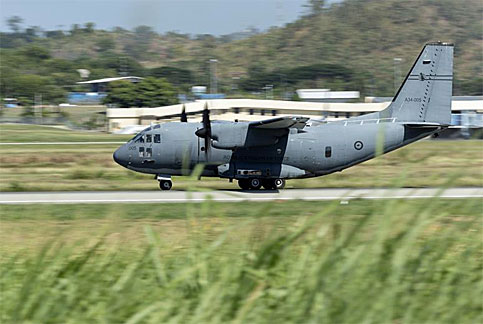

From: Eddie Hewitt, Royston, Barnsley, South Yorks
Subject: What?
Hi ya Tony - hope you are well?
I have recently been bombarded with adverts on Facebook regarding the subject of claiming for tinnitus/hearing loss suffered as a result of serving in the Armed Forces.
Having been living with tinnitus in one ear for the past five years or so, I wondered if anybody had any experience of claiming?
I have a healthy scepticism for anything I see on social media (especially the adverts!), and would much rather members' thoughts/advice.
Many thanks
Eddie
Subject: What?
Hi ya Tony - hope you are well?
I have recently been bombarded with adverts on Facebook regarding the subject of claiming for tinnitus/hearing loss suffered as a result of serving in the Armed Forces.
Having been living with tinnitus in one ear for the past five years or so, I wondered if anybody had any experience of claiming?
I have a healthy scepticism for anything I see on social media (especially the adverts!), and would much rather members' thoughts/advice.
Many thanks
Eddie


The Mighty Hercules - 60 Years of Extraordinary Service

RAF Globemaster delivers British Army attack helicopters to the Arctic
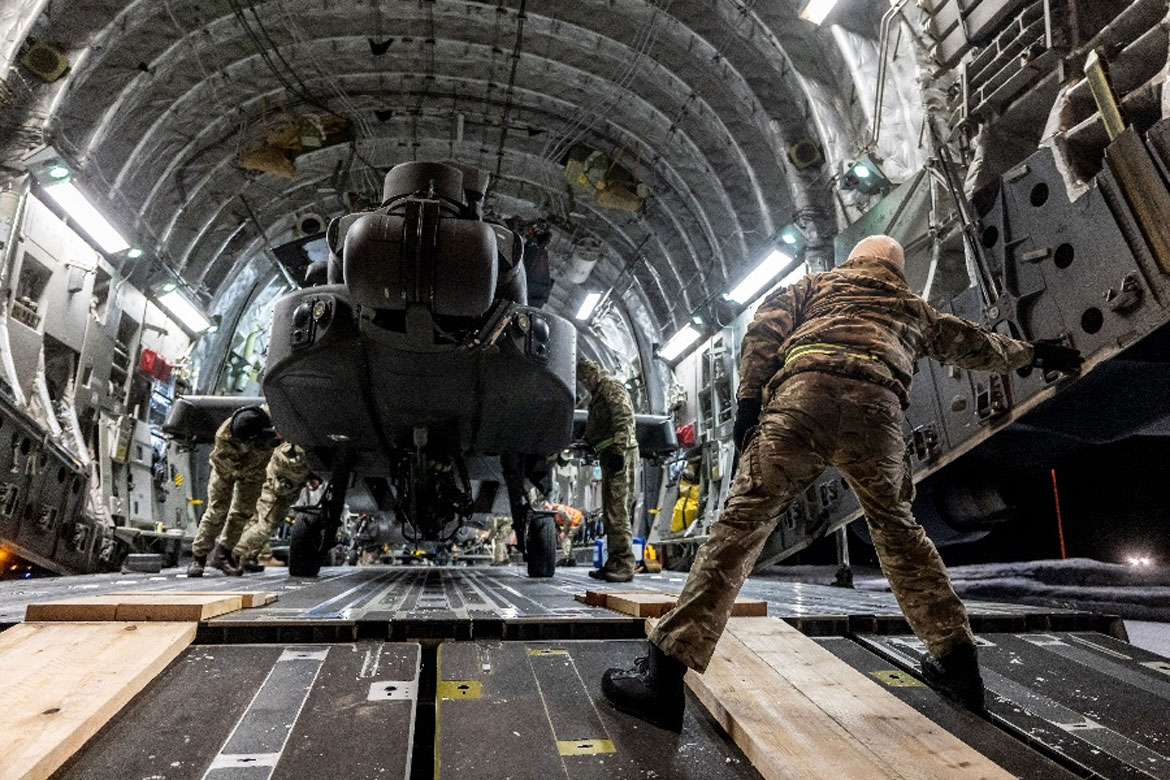
A Royal Air Force C-17 Globemaster recently delivered British Army Air Corps Apache helicopters to Royal Norwegian Air Force Base Bardufoss.
Joint Helicopter Command personnel were hopeful that they could successfully train and complete environmental qualifications in the Arctic Winter and to learn how to live and operate in one of the world’s most hostile environments where temperatures can fall to -30°C.
The survival and operational training ensure that UK military personnel can operate globally to protect the UK’s interests, particularly alongside NATO and partner Nations. Cooperation and interoperability enable the projection of lethal force and also an ability to sustain deployments.
defence-industry.eu
Joint Helicopter Command personnel were hopeful that they could successfully train and complete environmental qualifications in the Arctic Winter and to learn how to live and operate in one of the world’s most hostile environments where temperatures can fall to -30°C.
The survival and operational training ensure that UK military personnel can operate globally to protect the UK’s interests, particularly alongside NATO and partner Nations. Cooperation and interoperability enable the projection of lethal force and also an ability to sustain deployments.
defence-industry.eu
This Newsletter is Dedicated
to the Memory of:
Trevor Newport (RNZAF)
to the Memory of:
Trevor Newport (RNZAF)
Tony Gale
ukmamsoba@gmail.com
ukmamsoba@gmail.com
.
